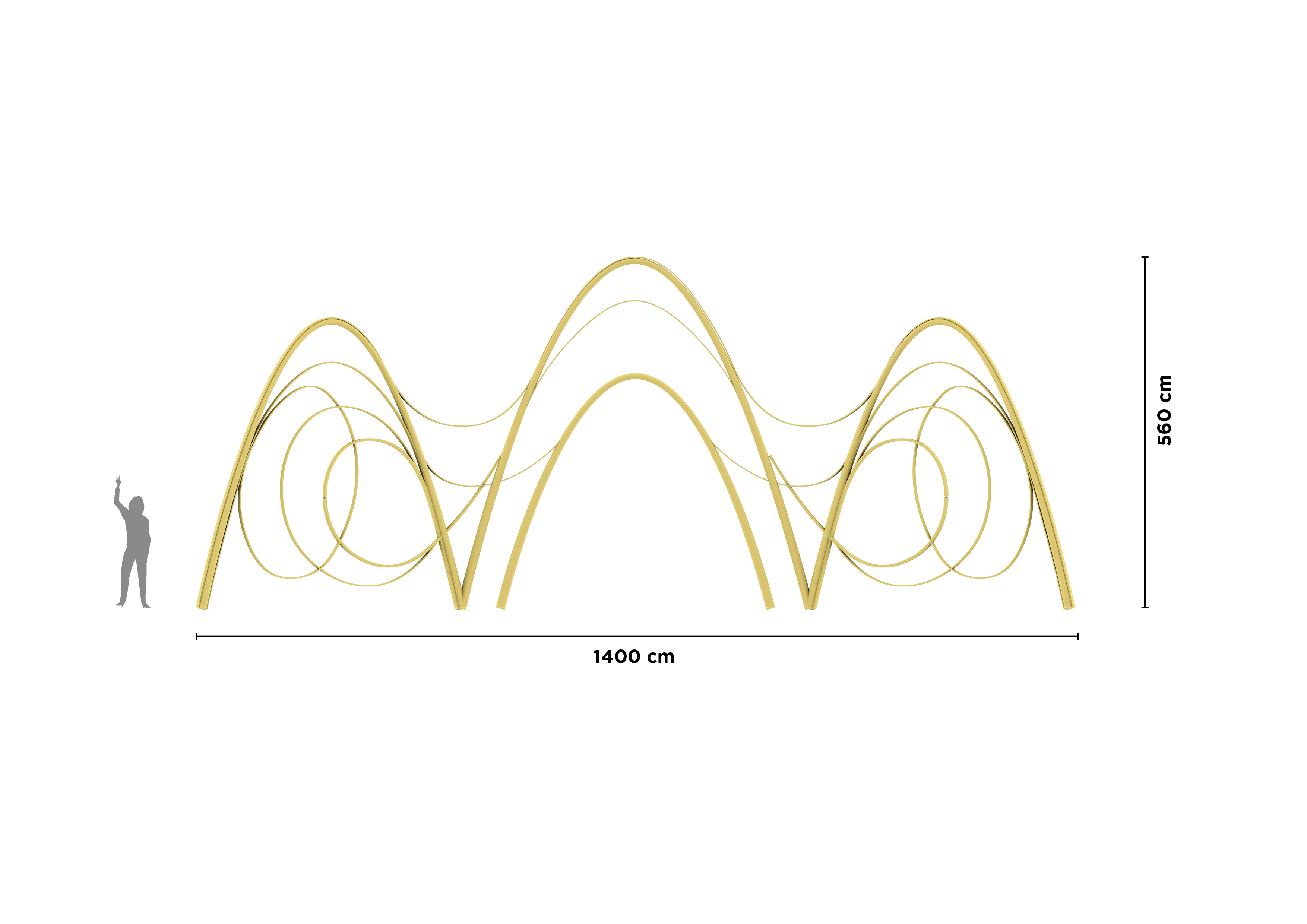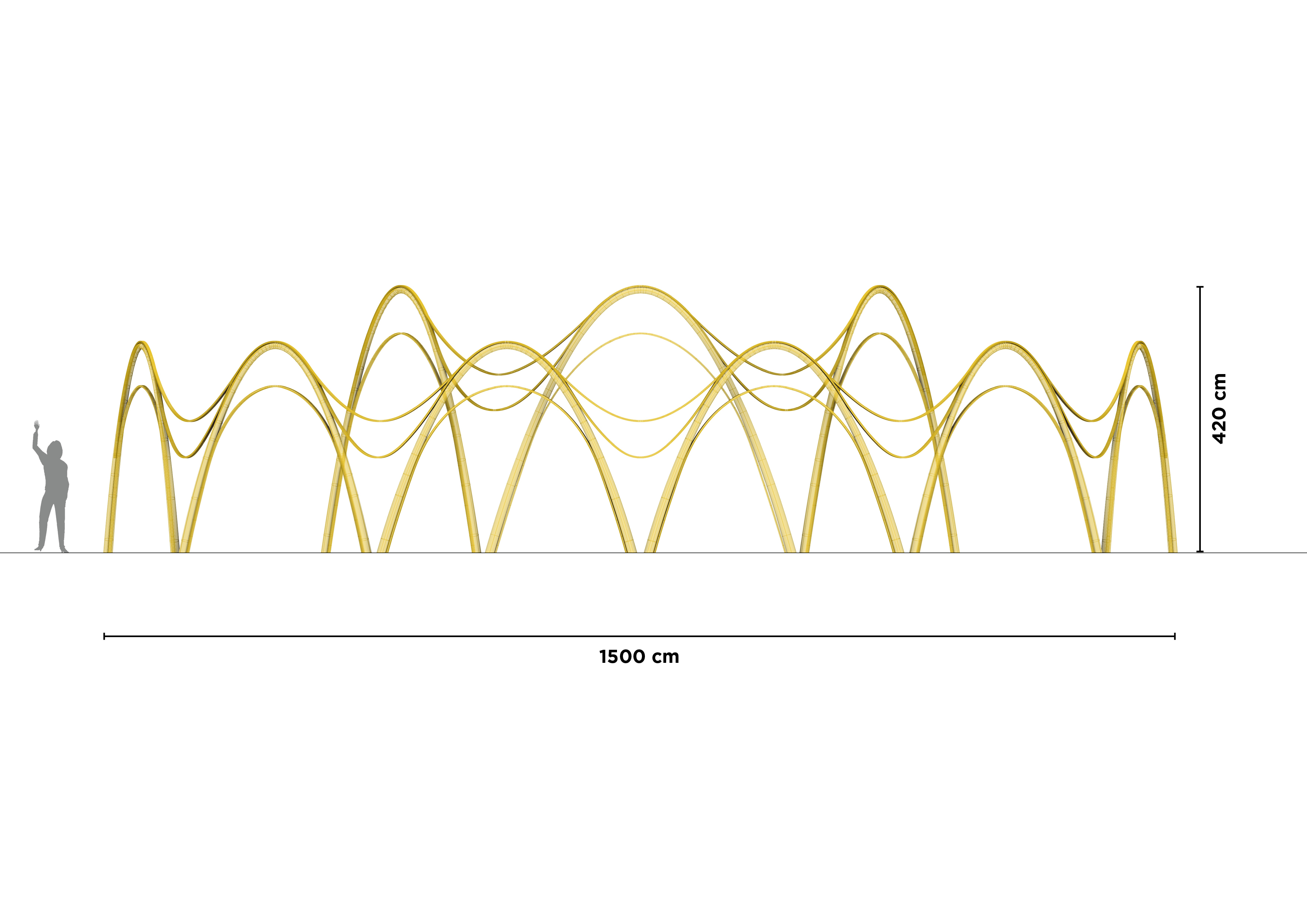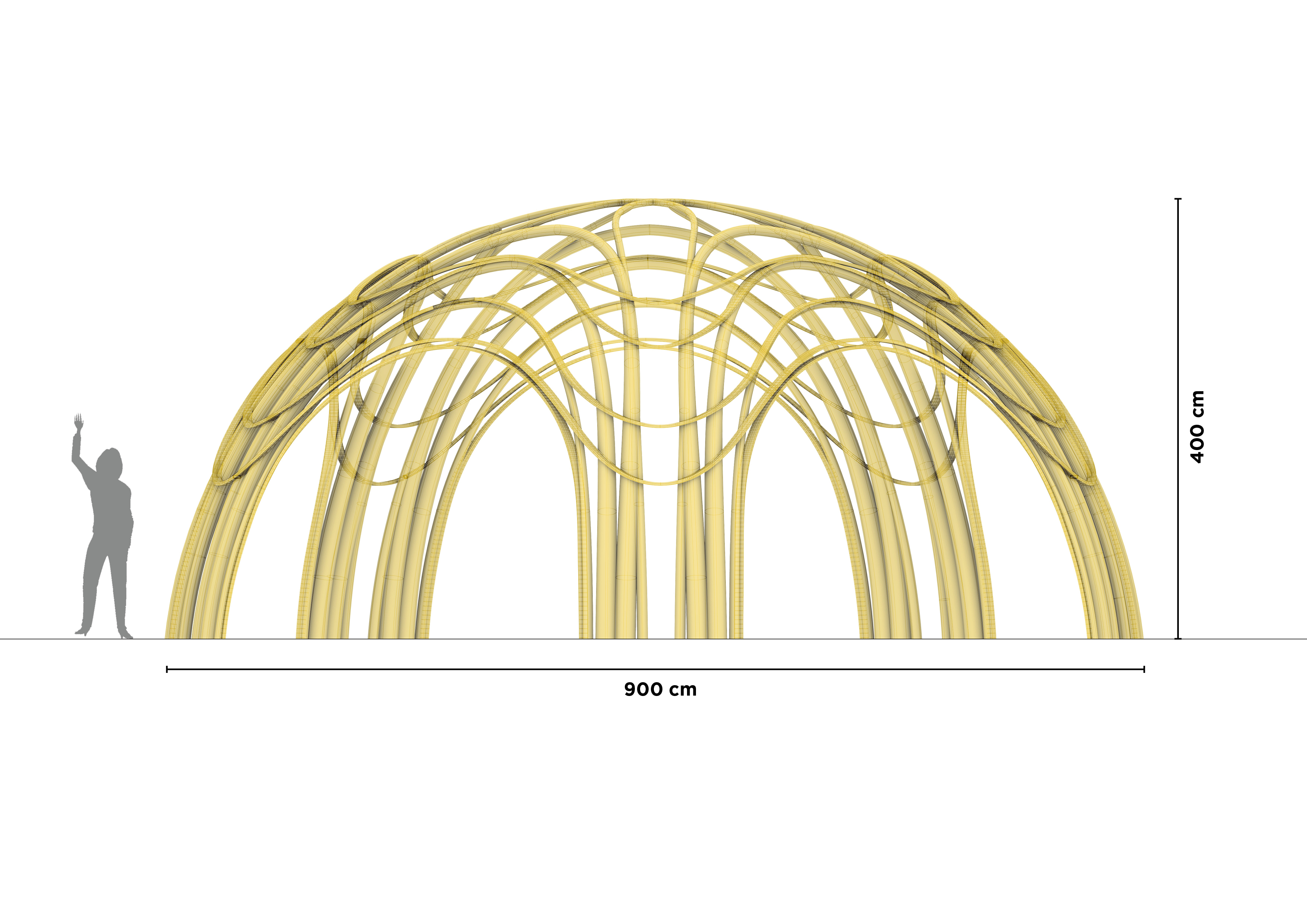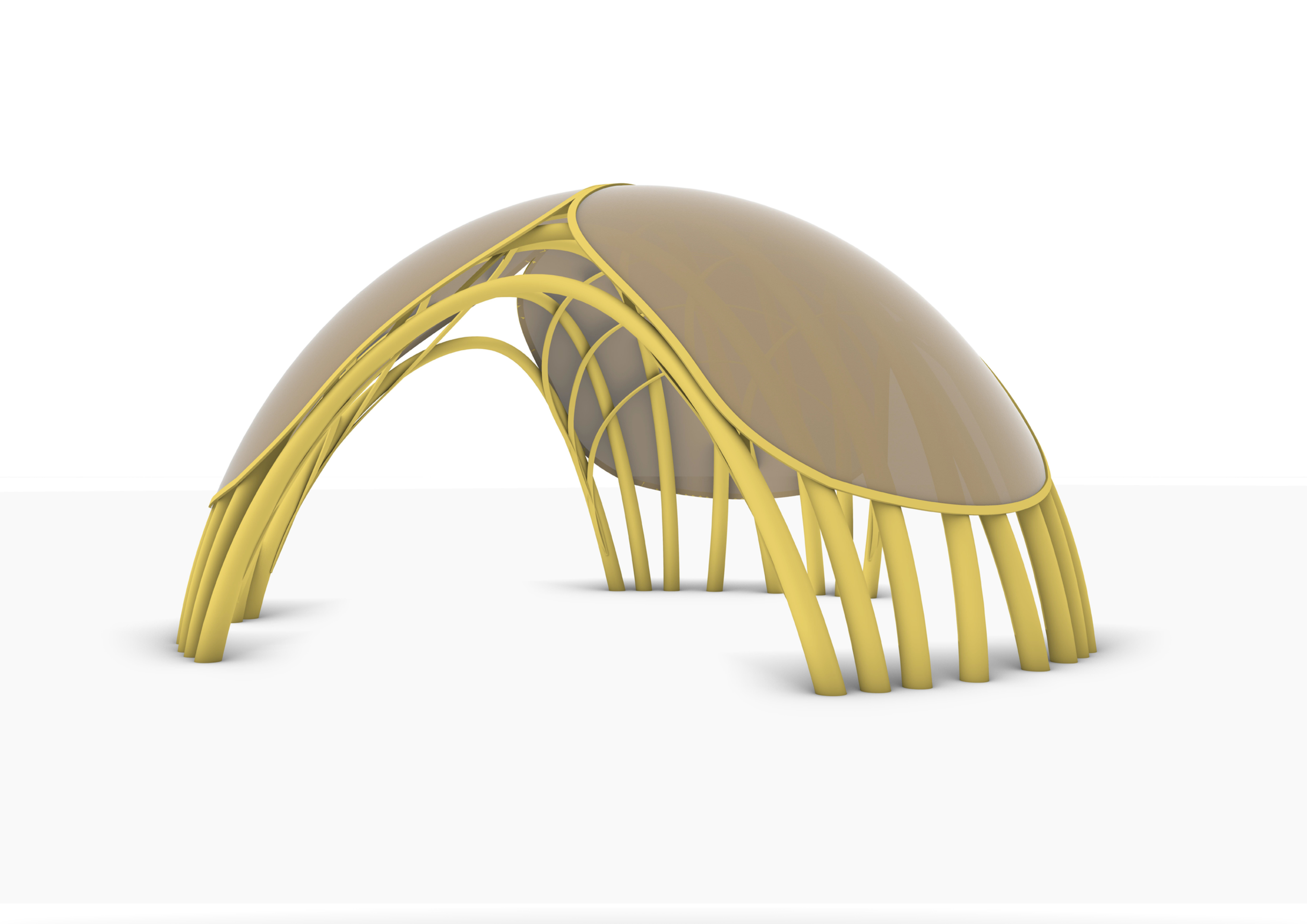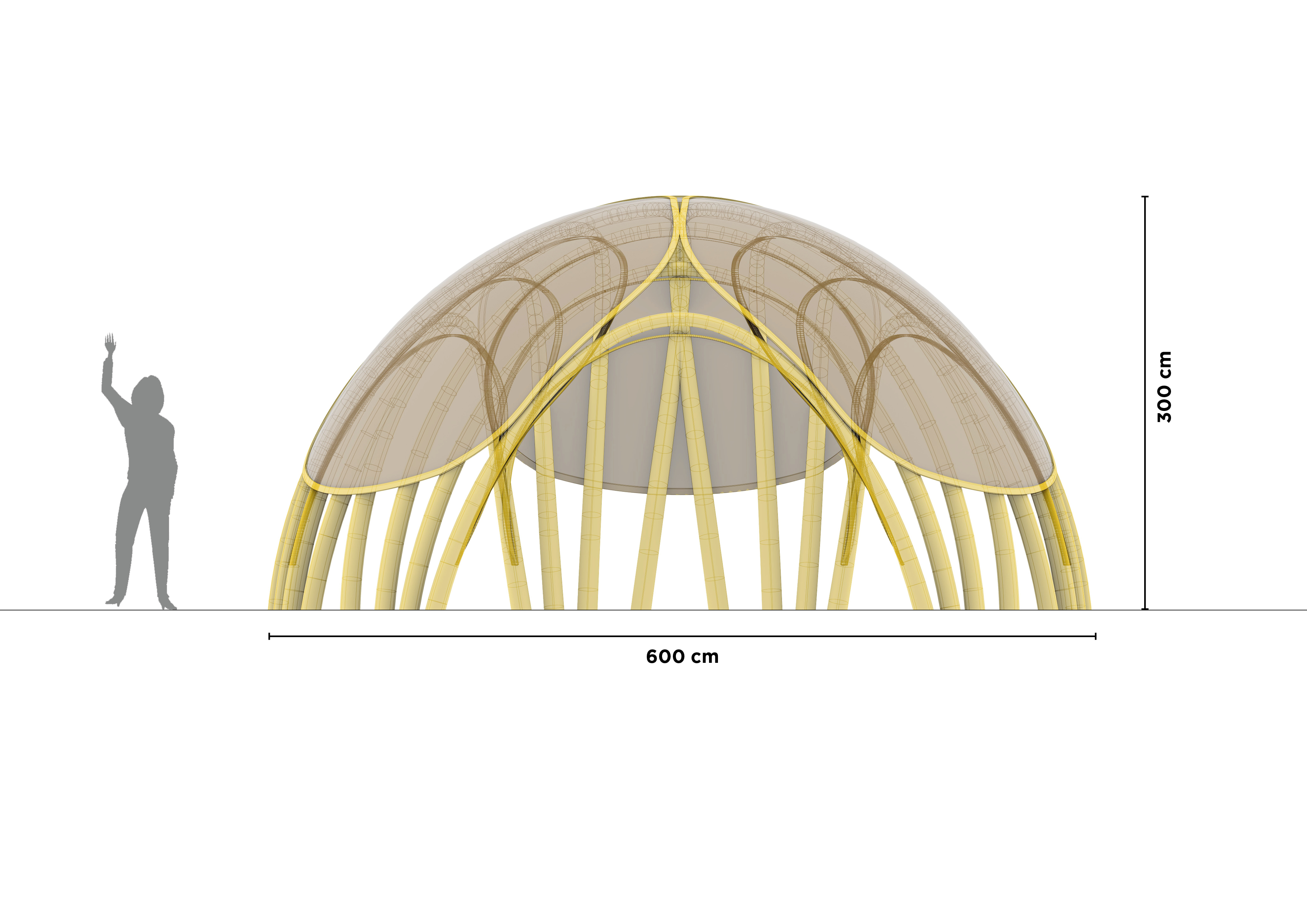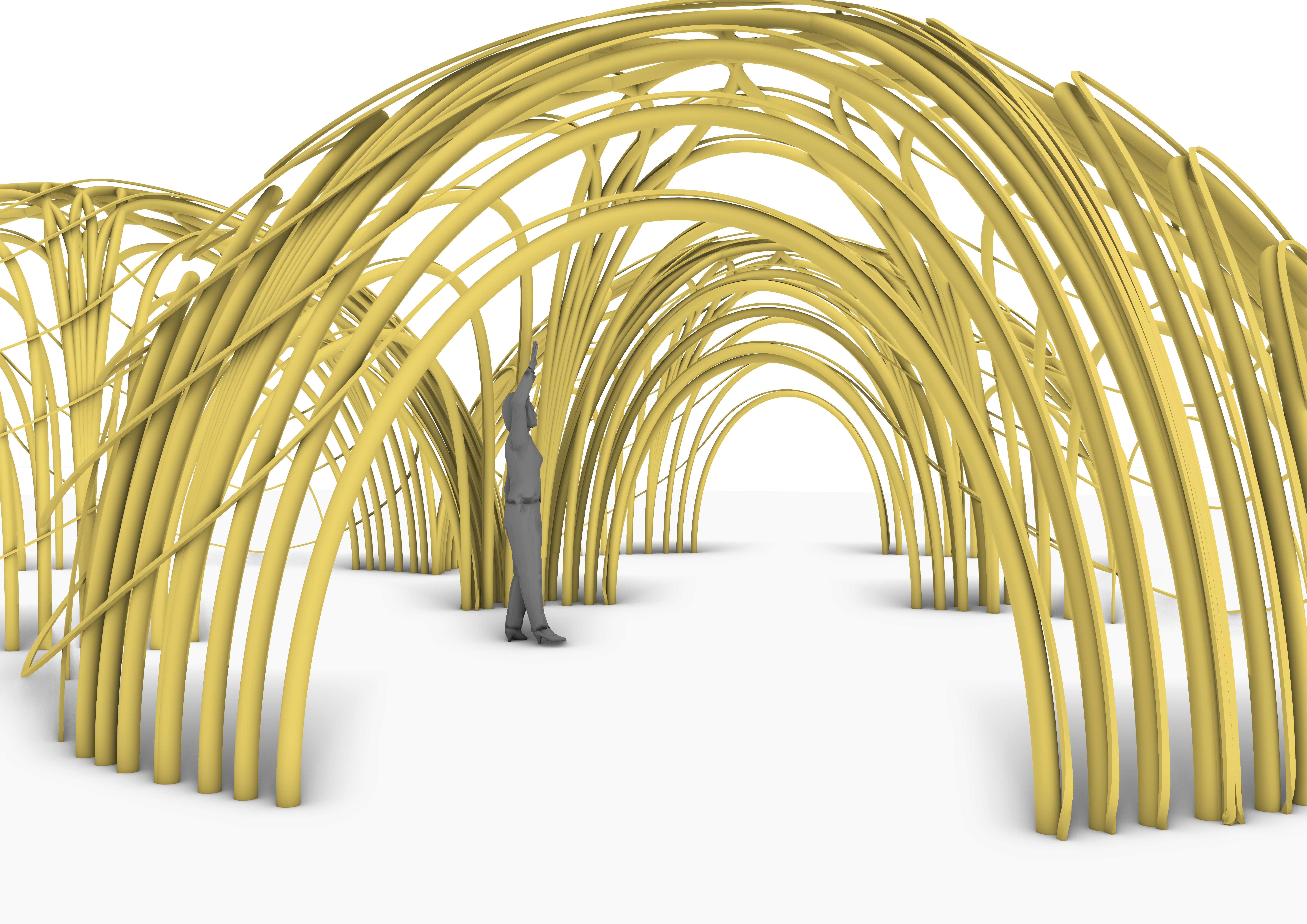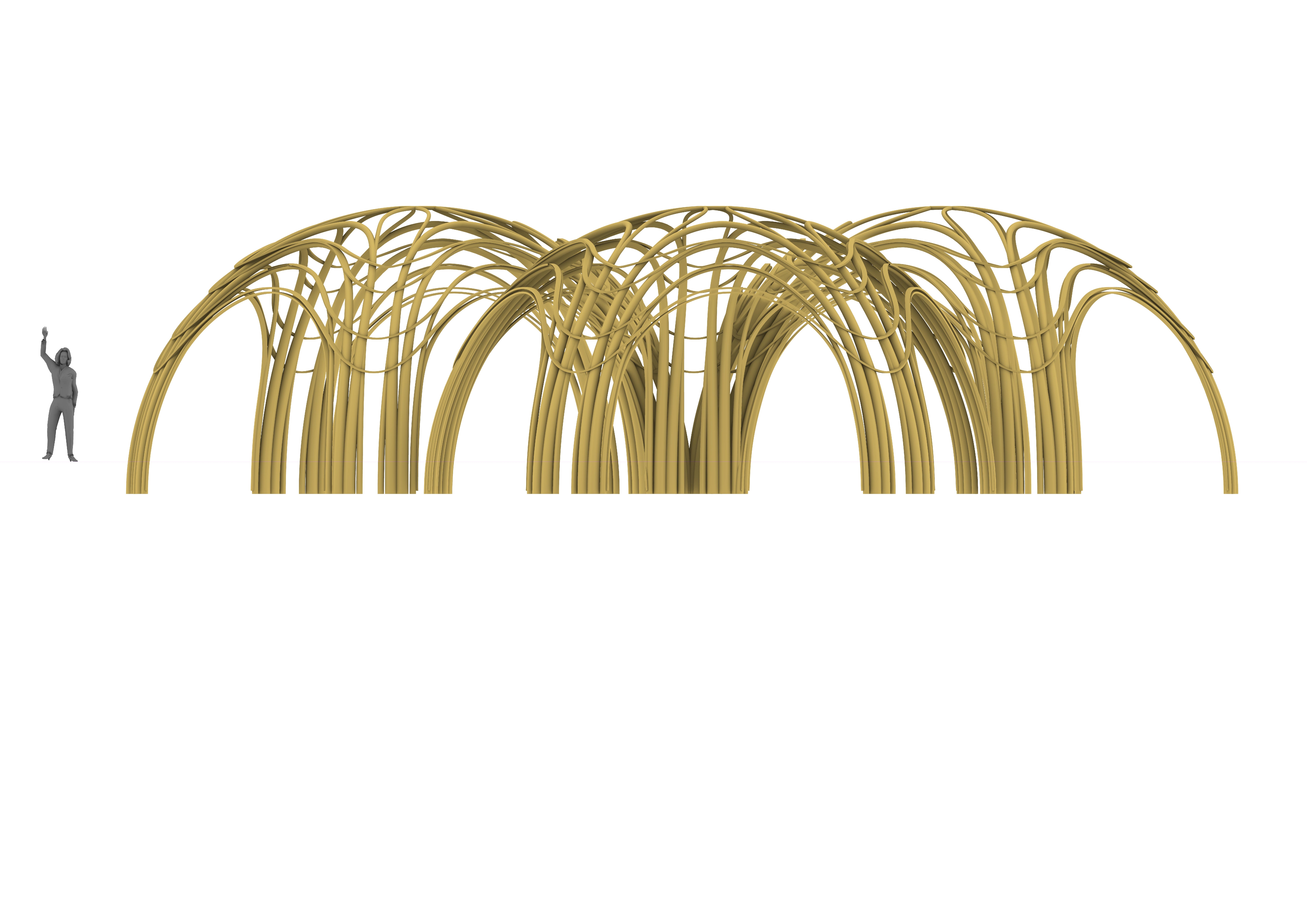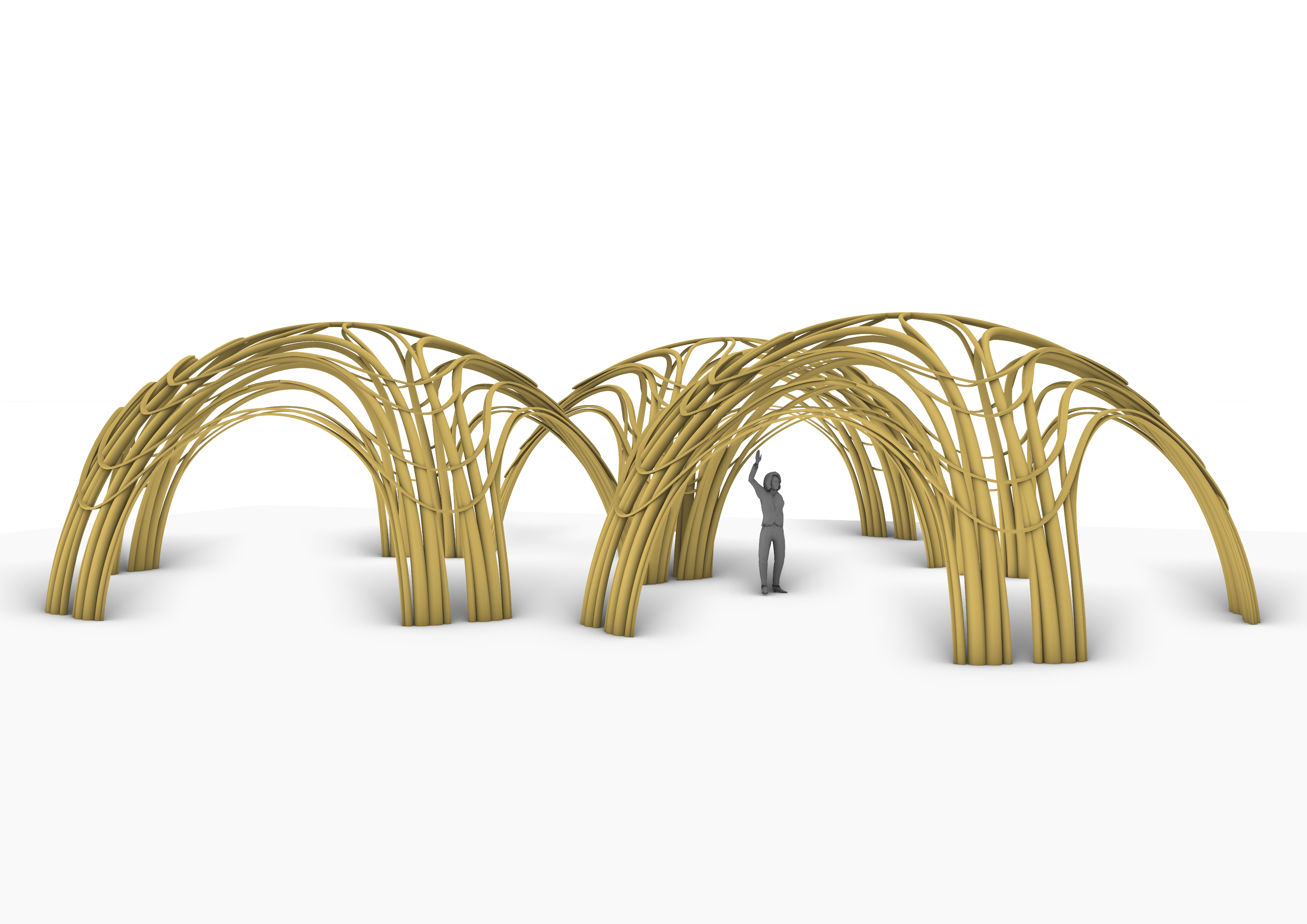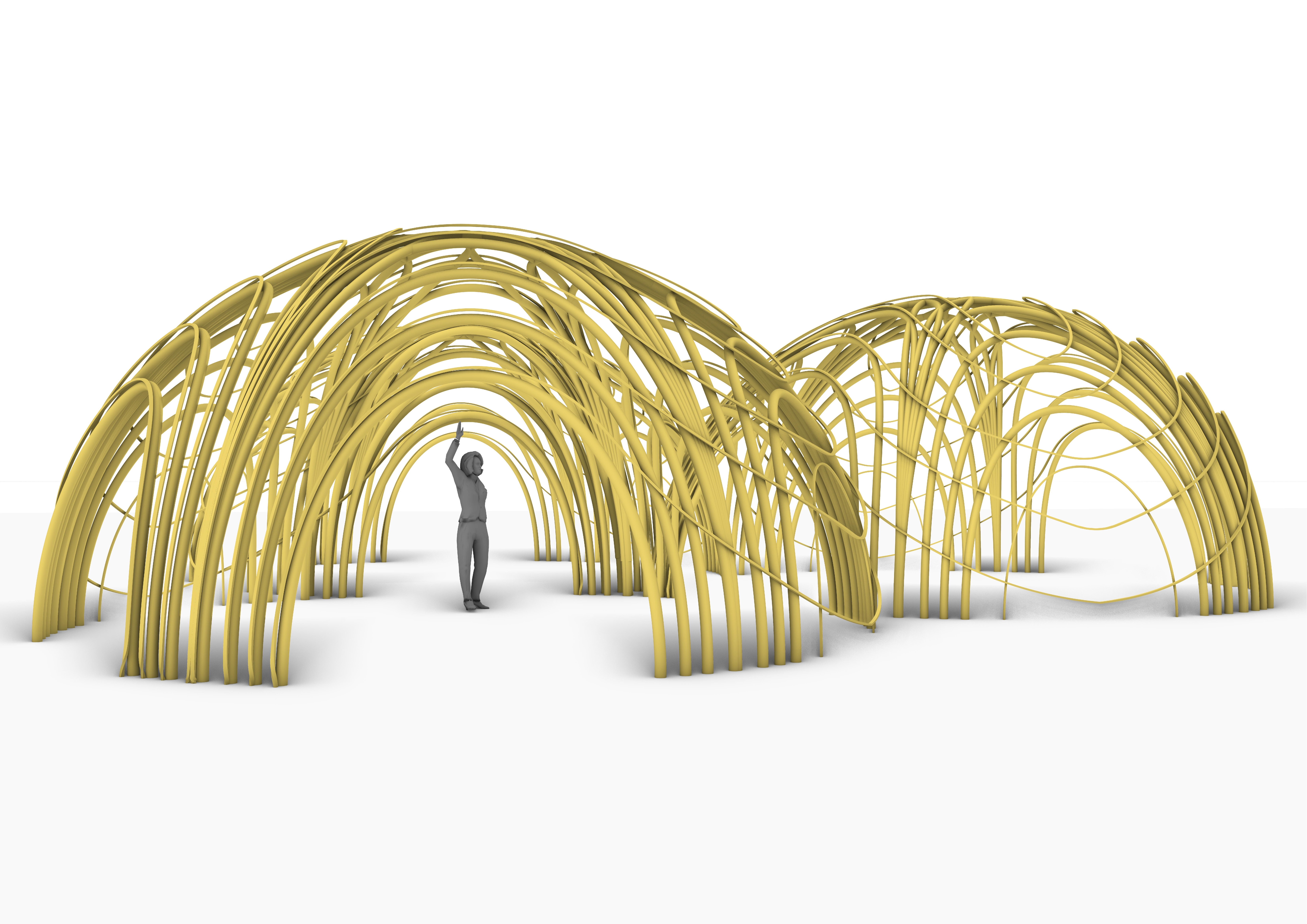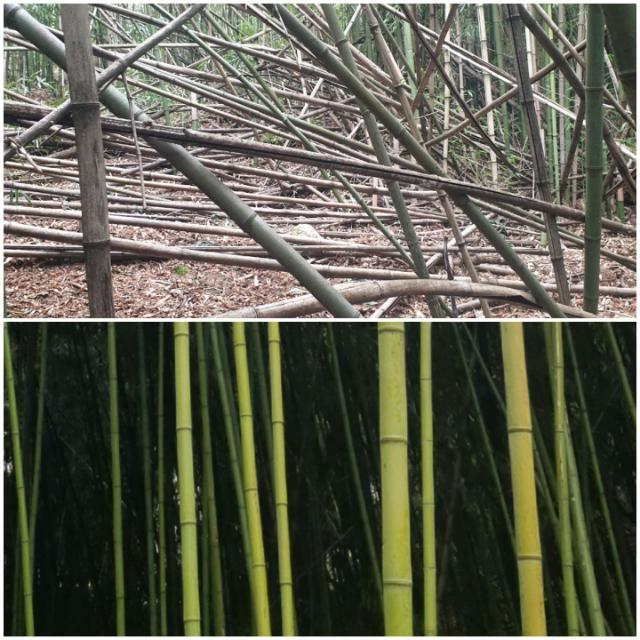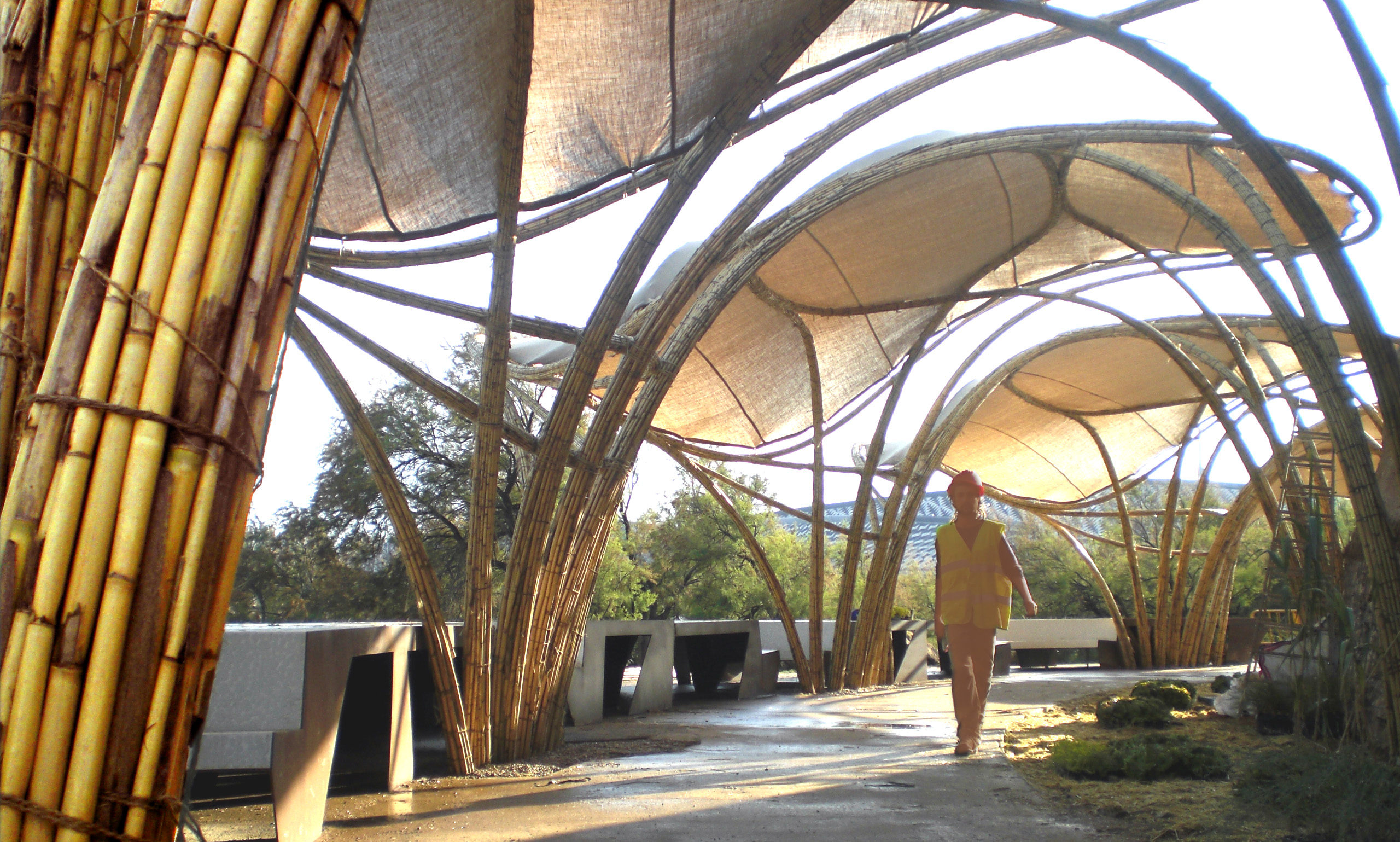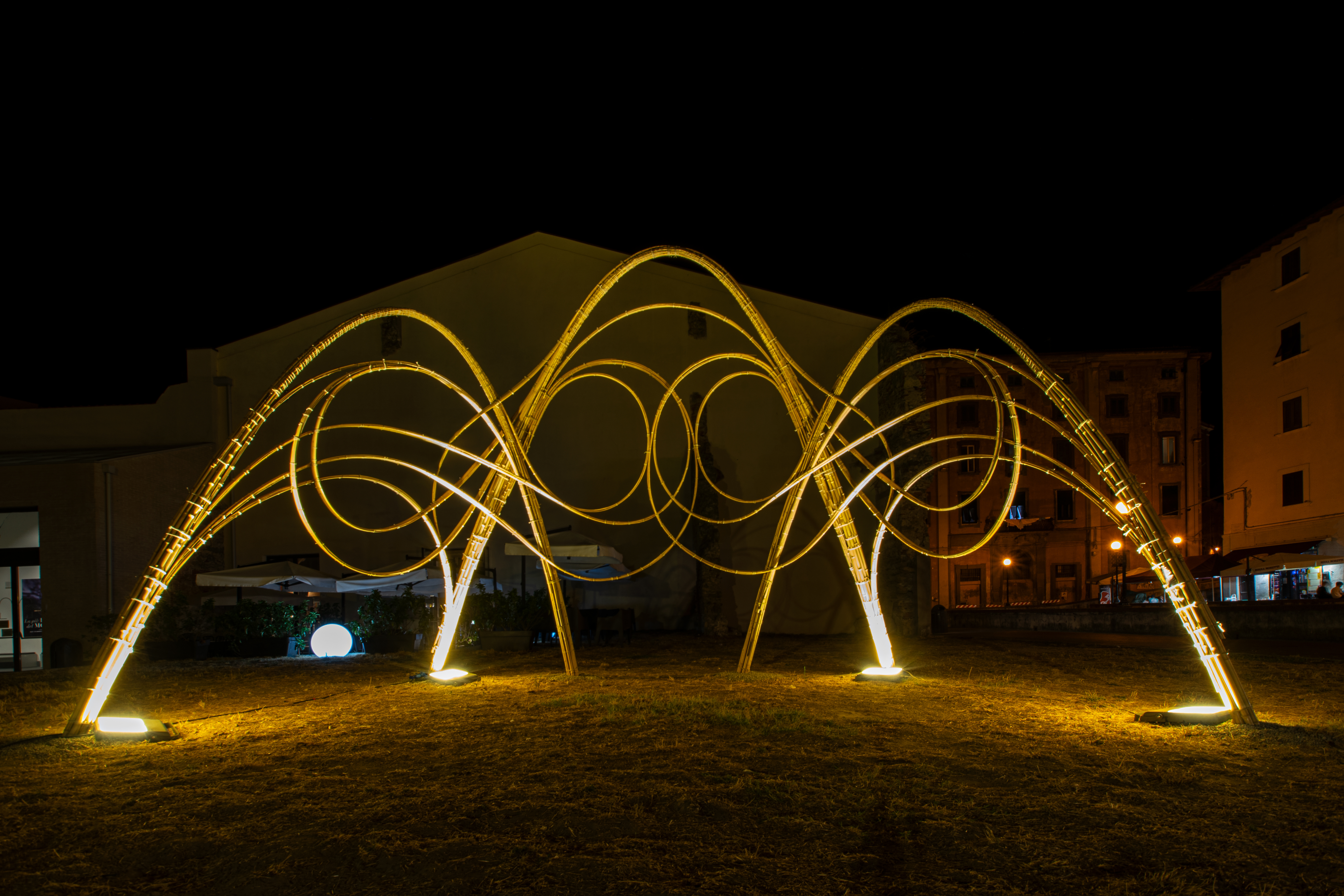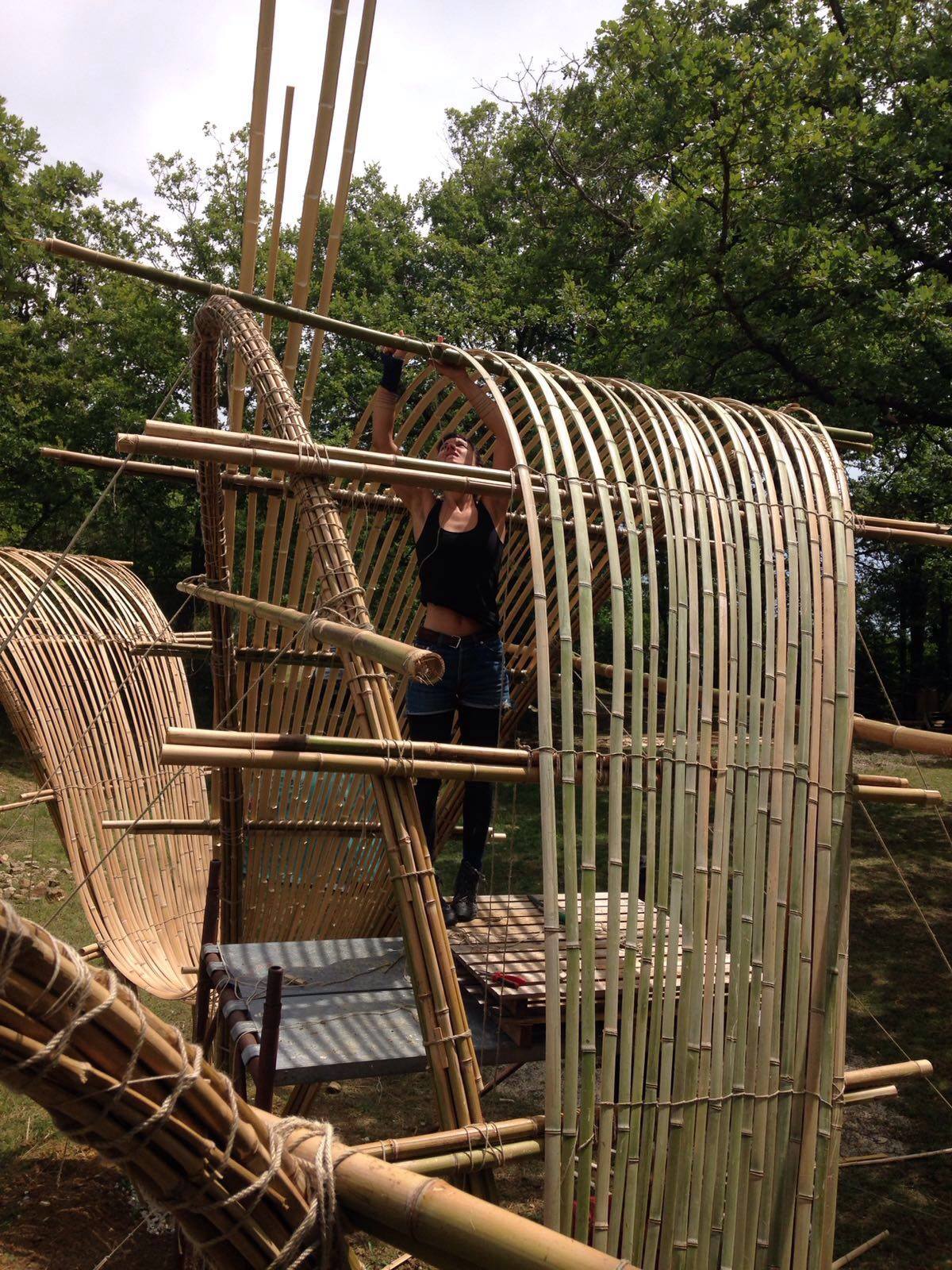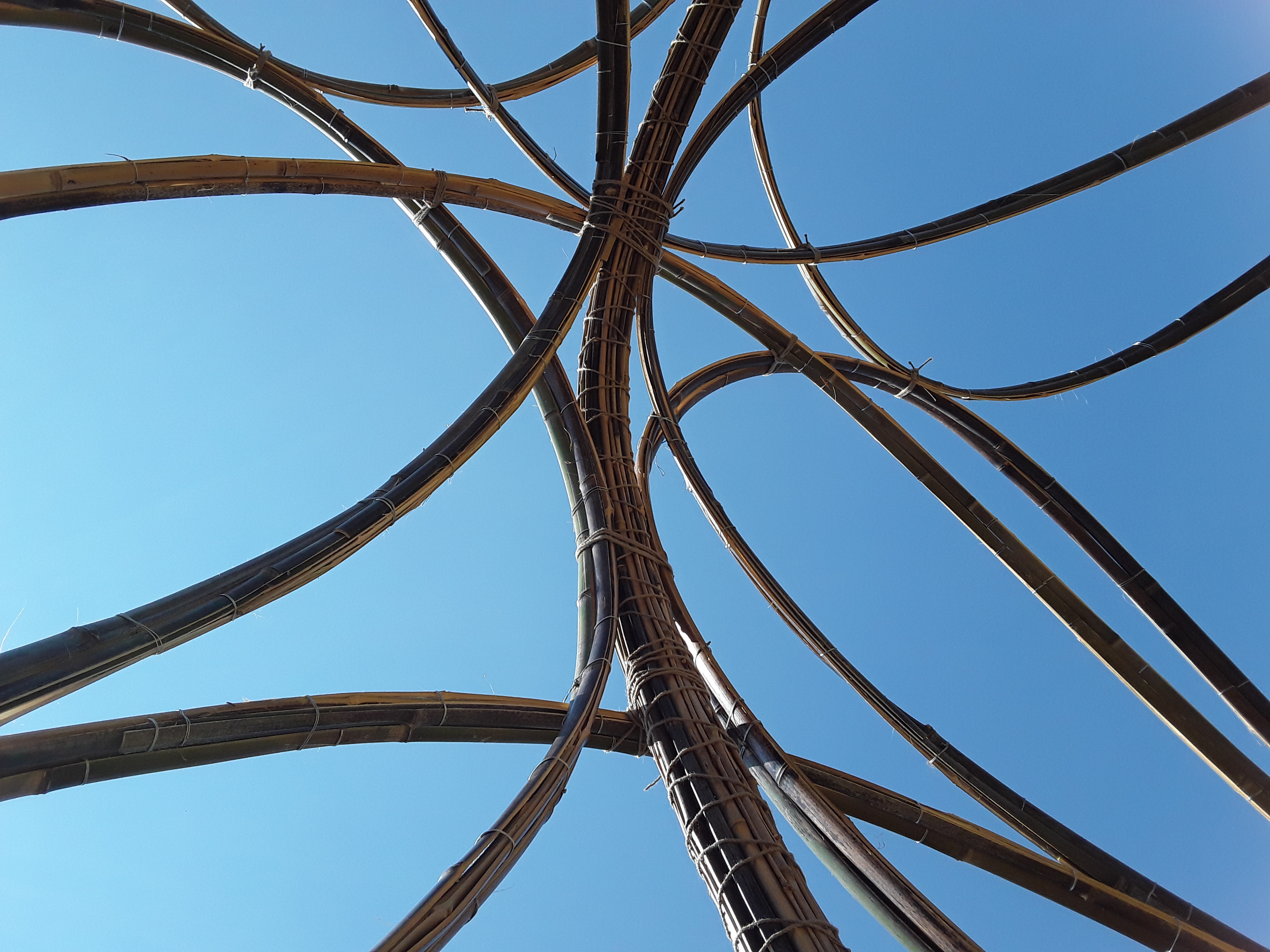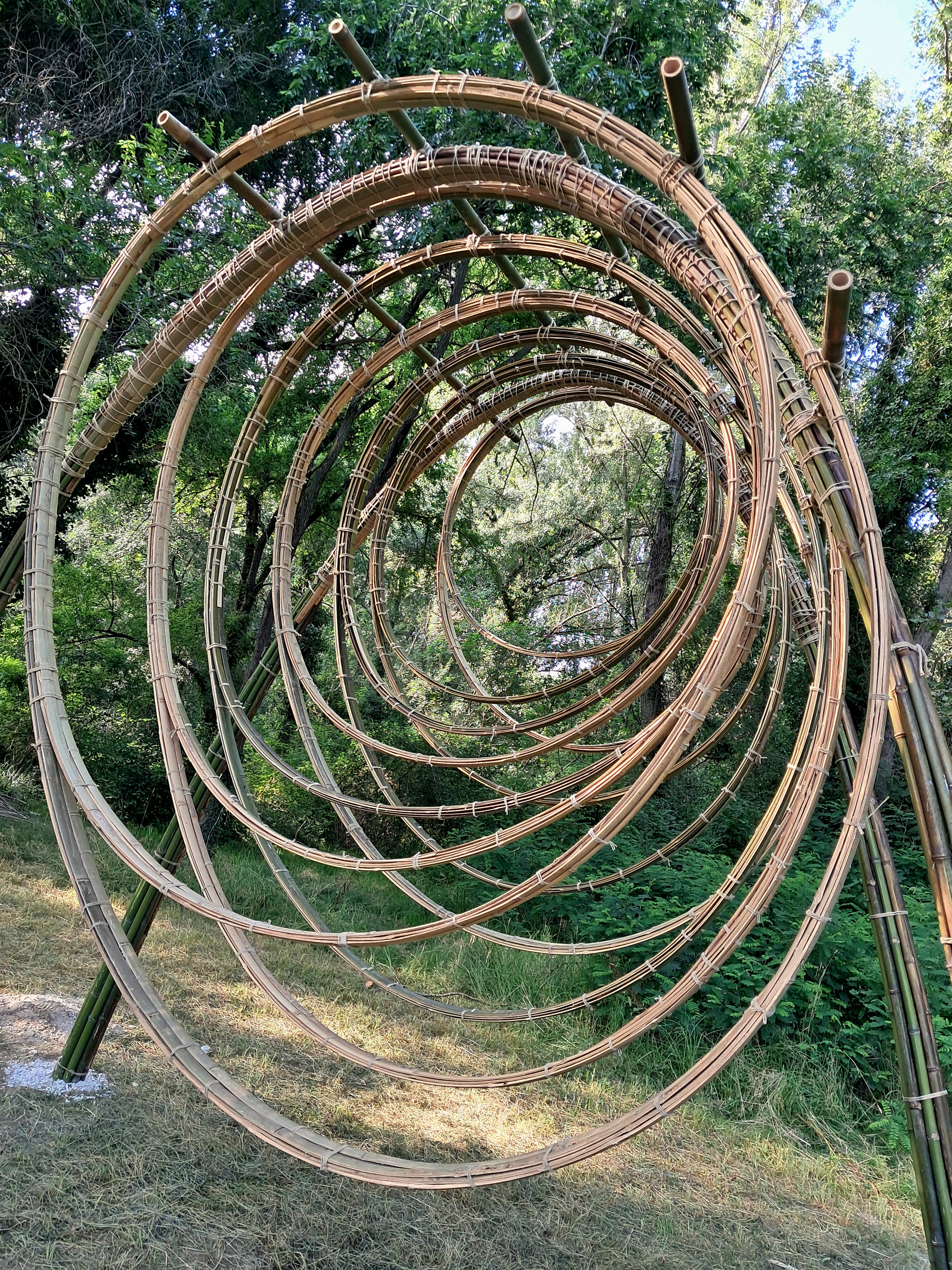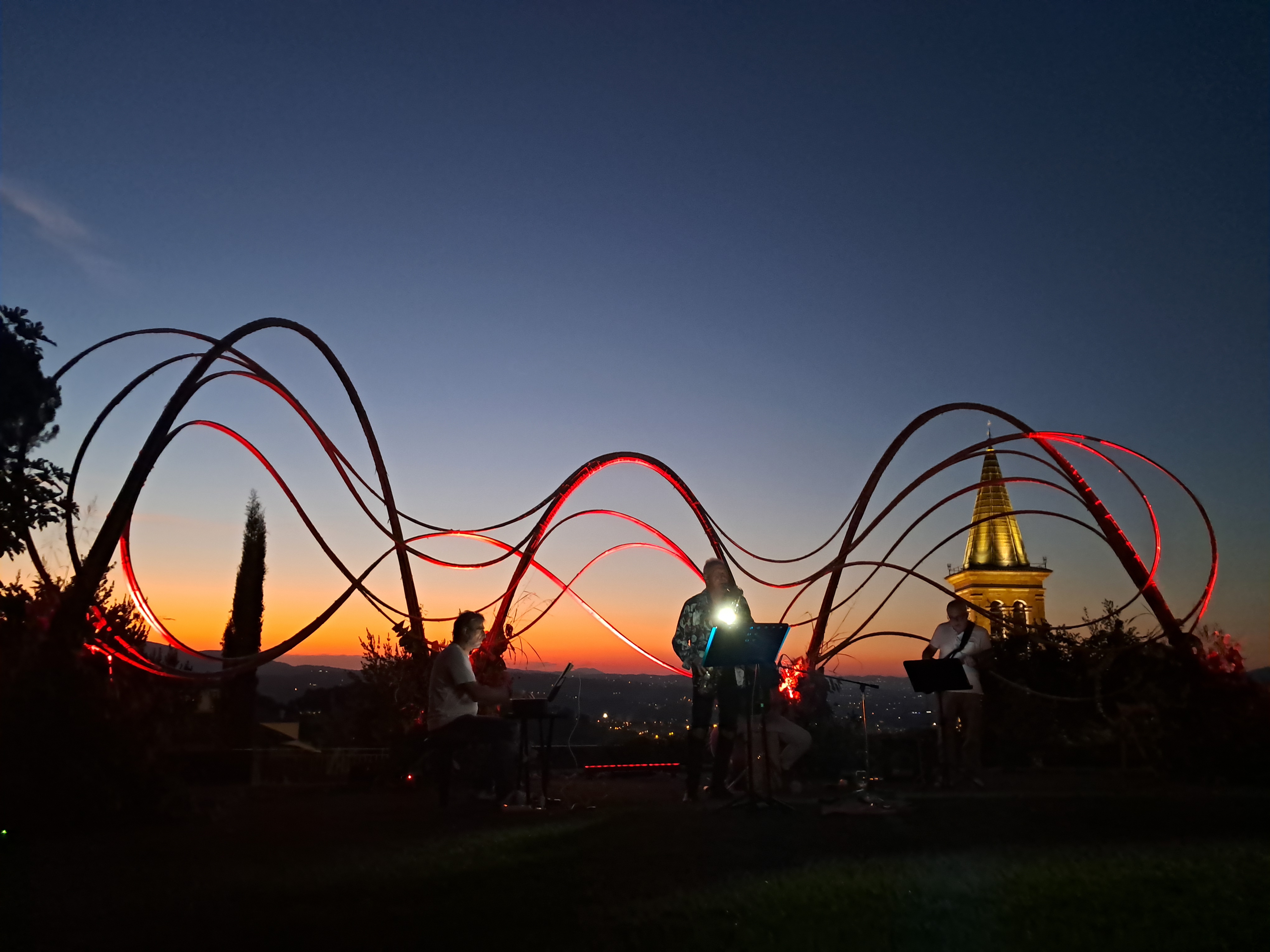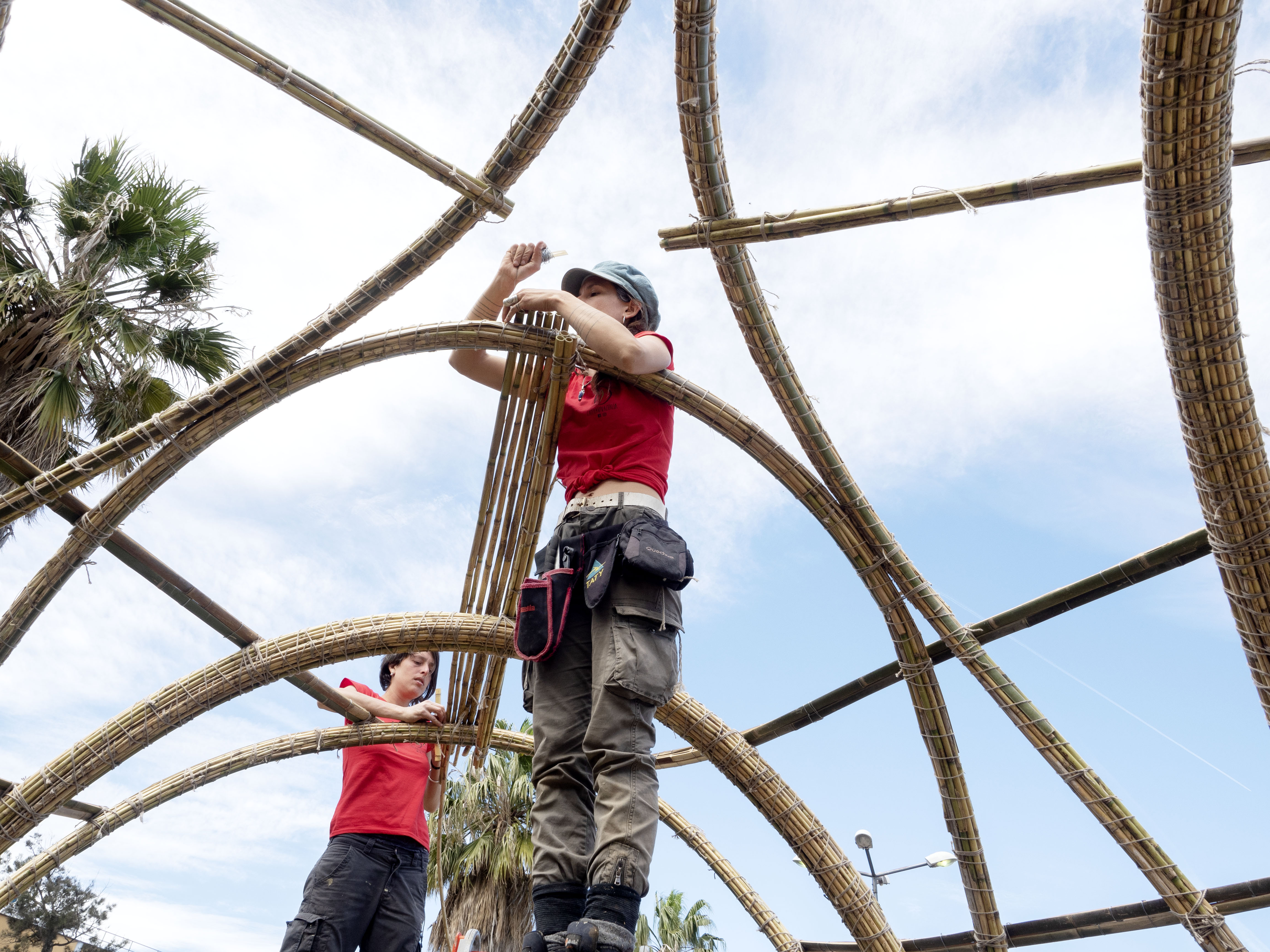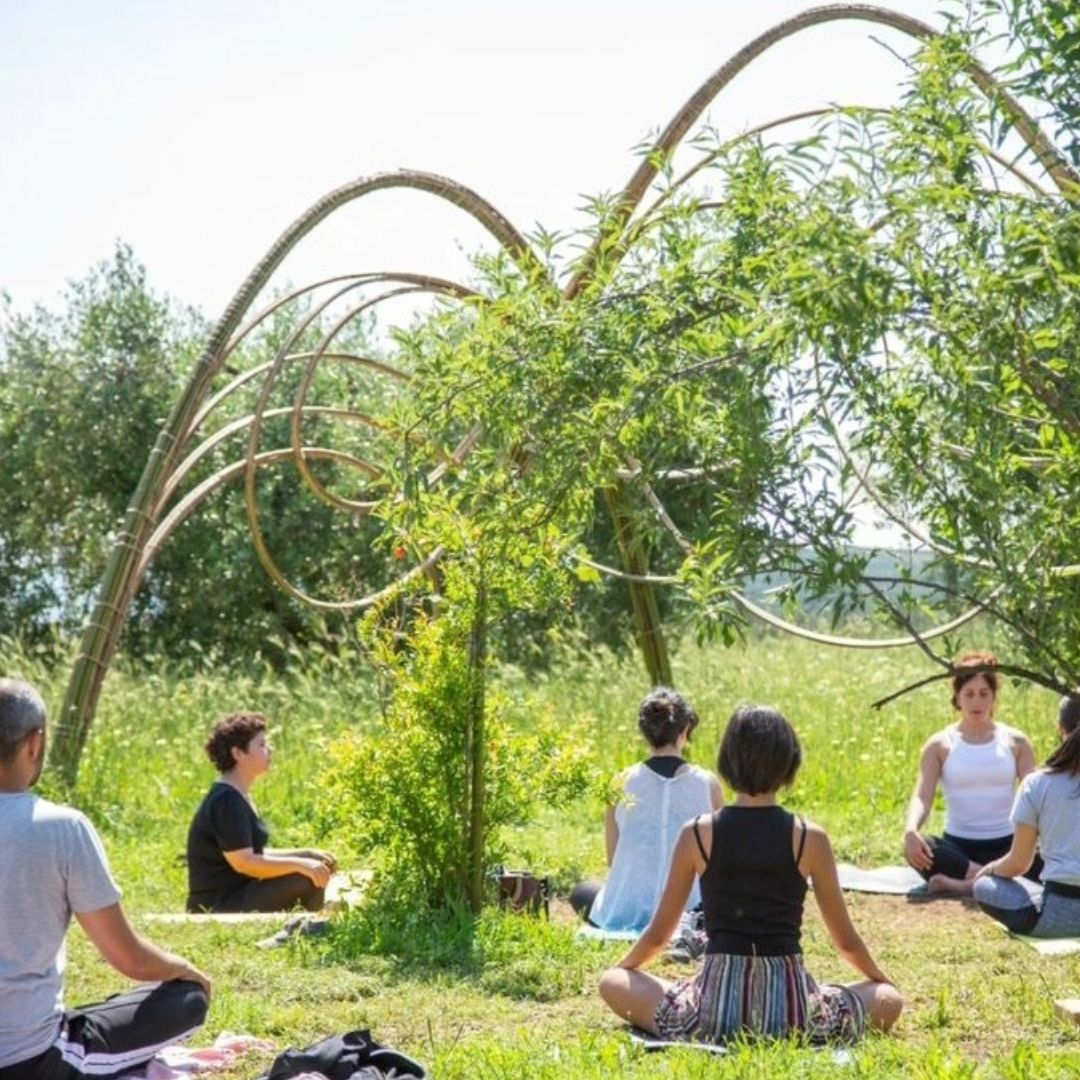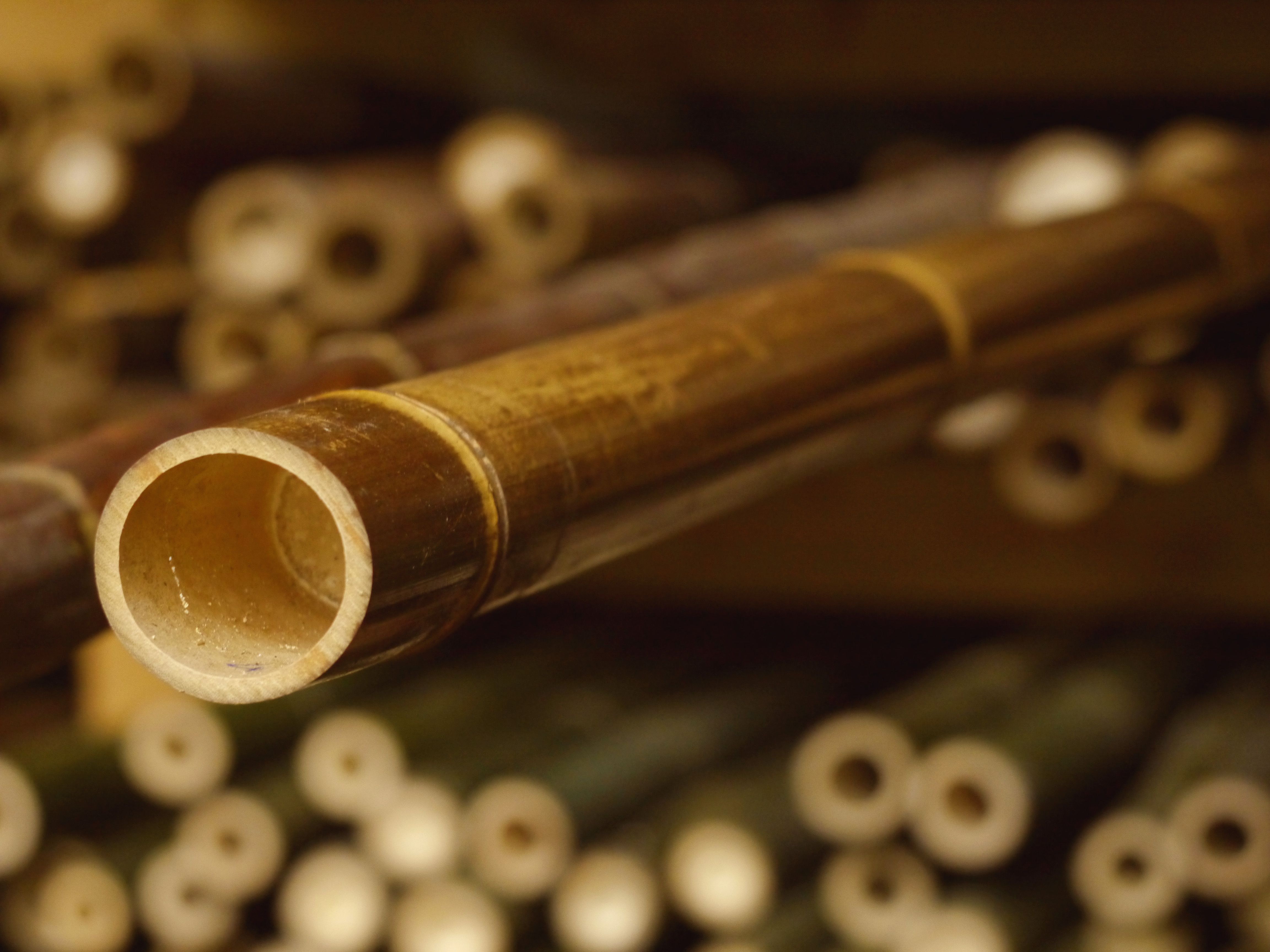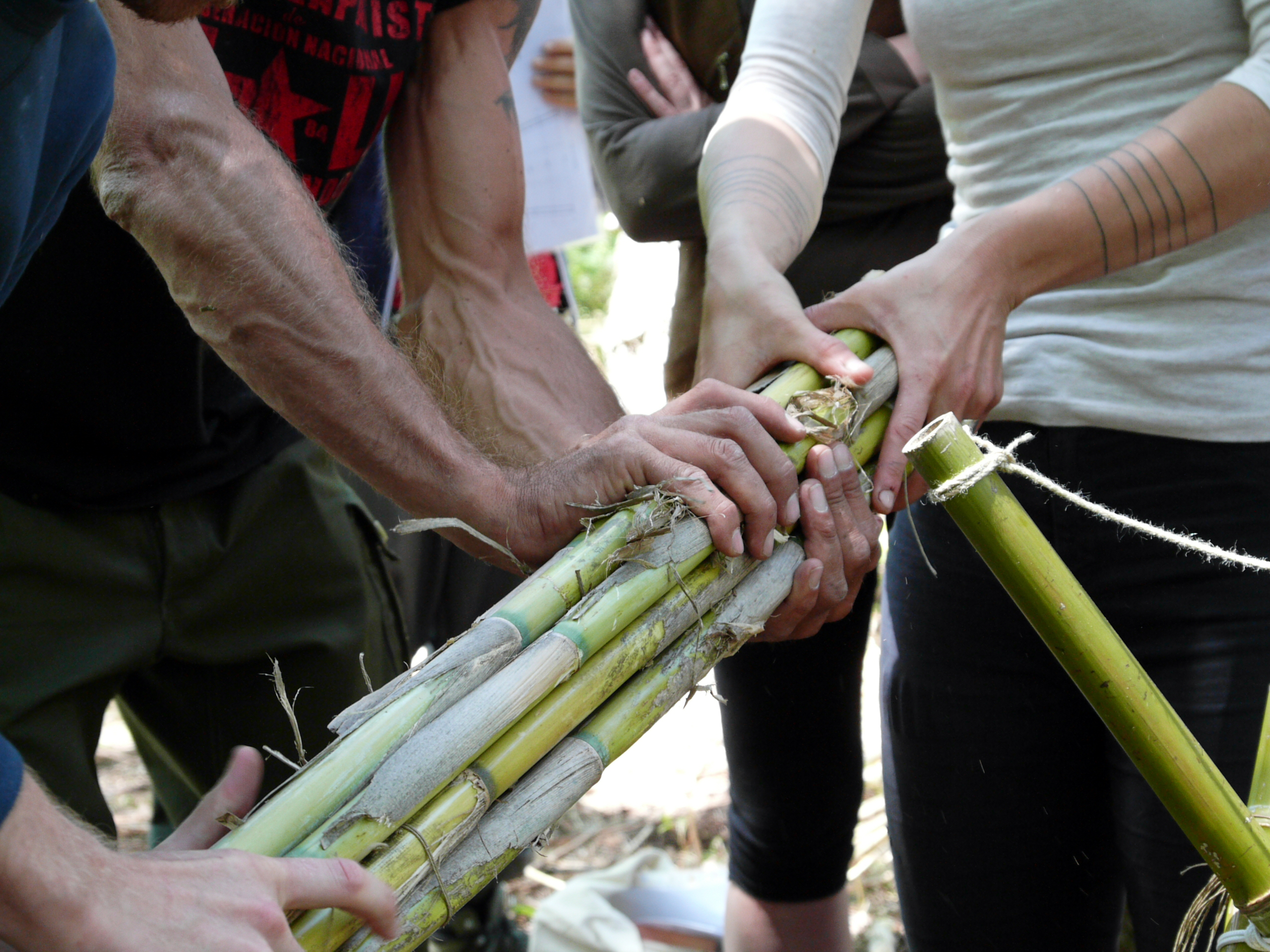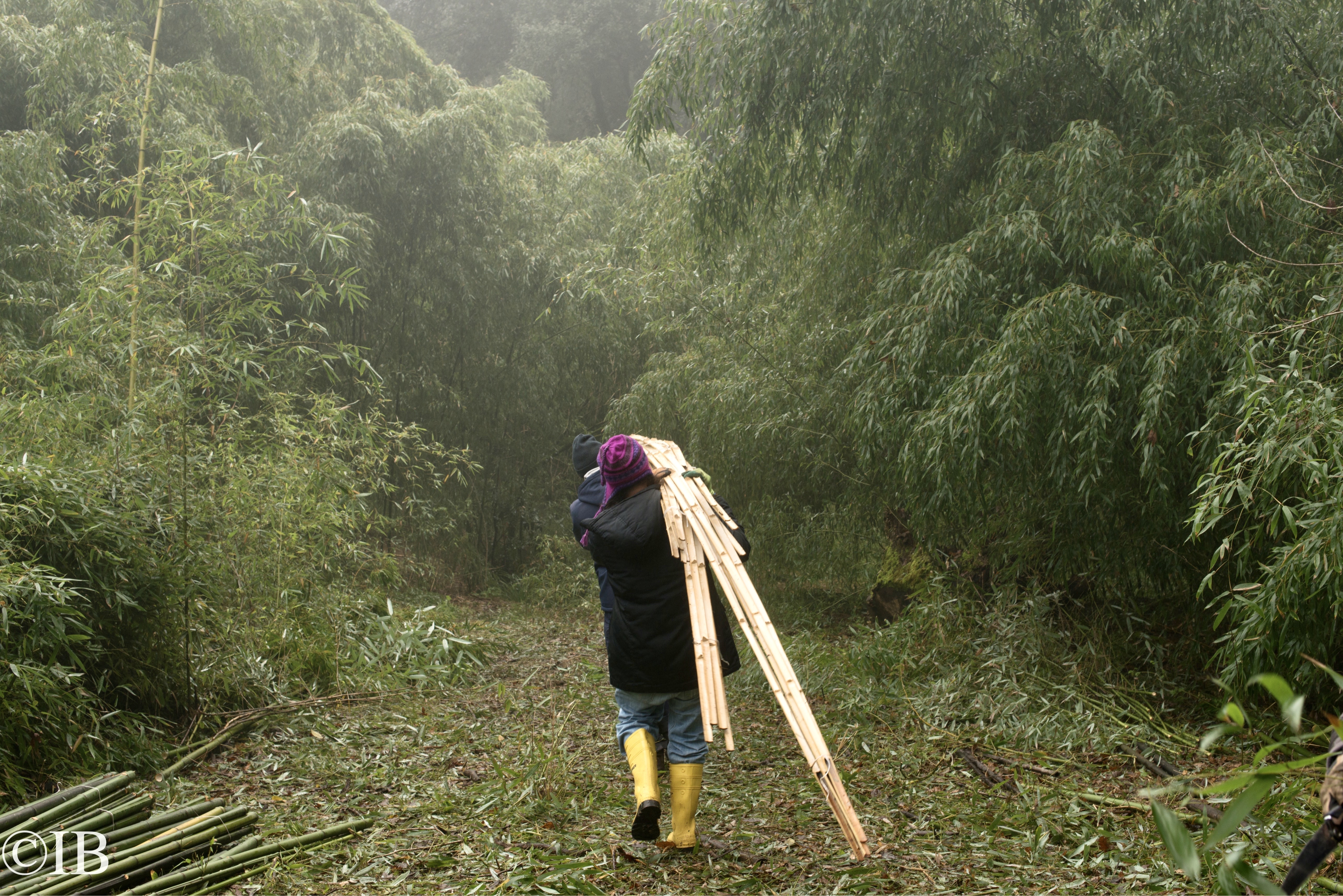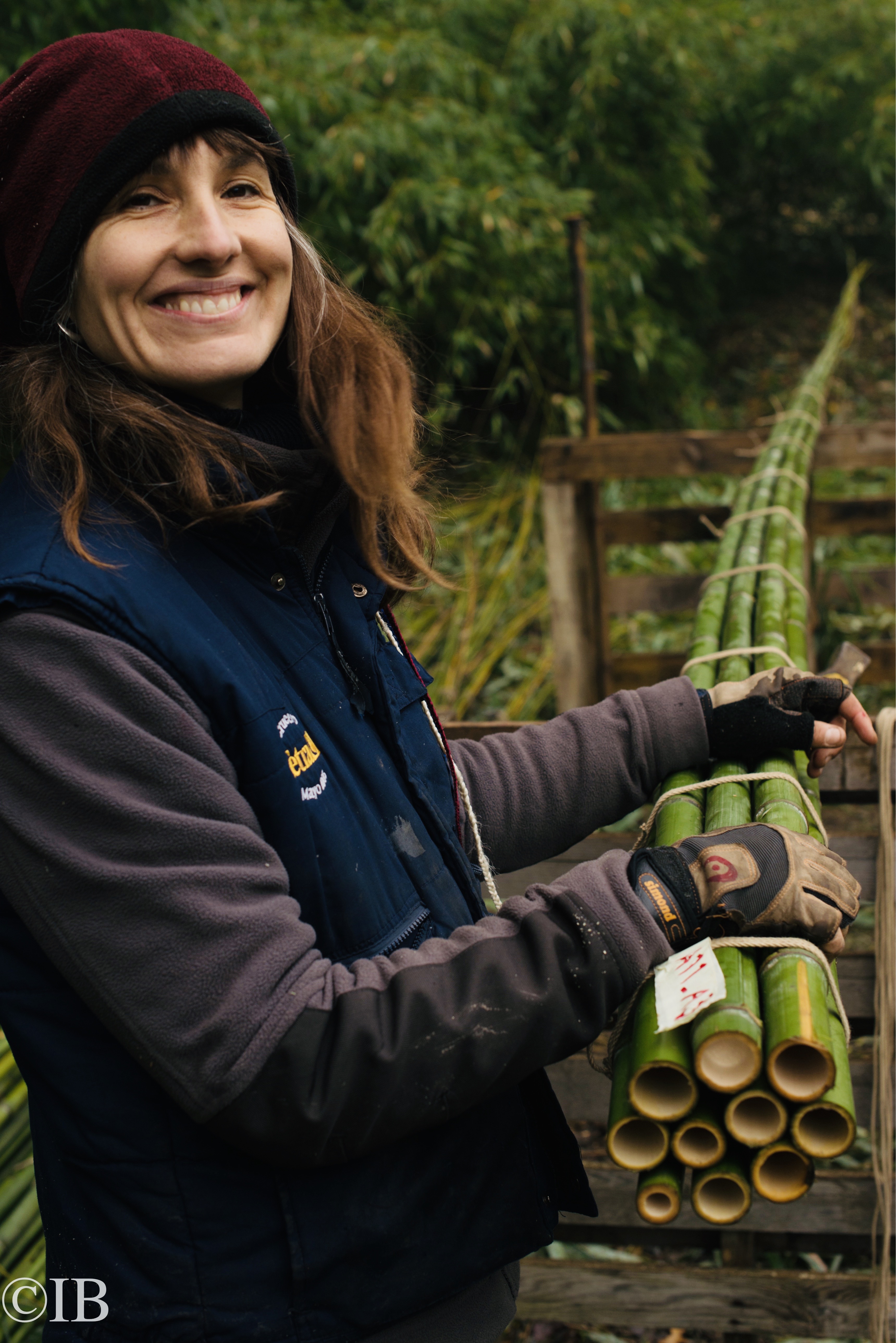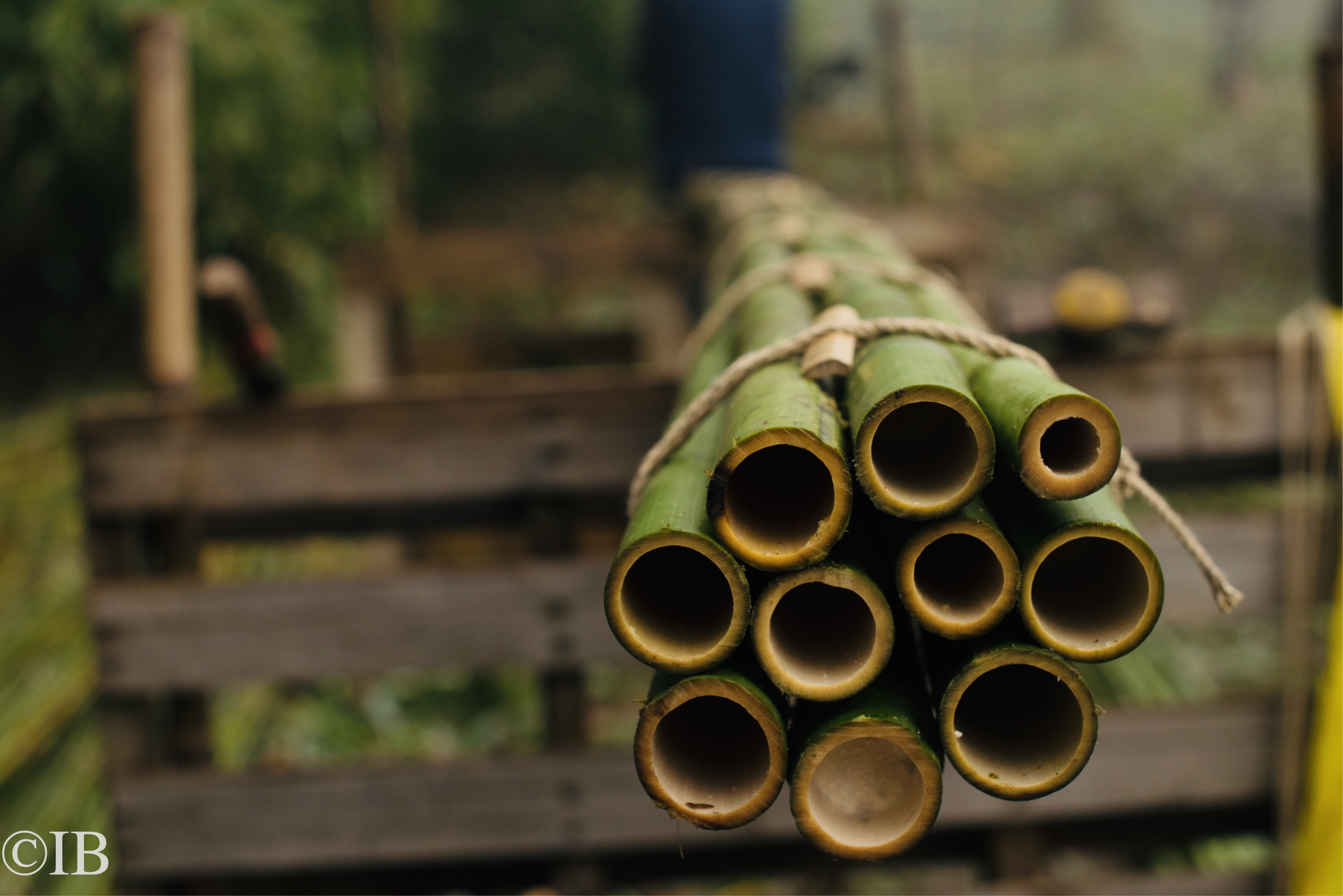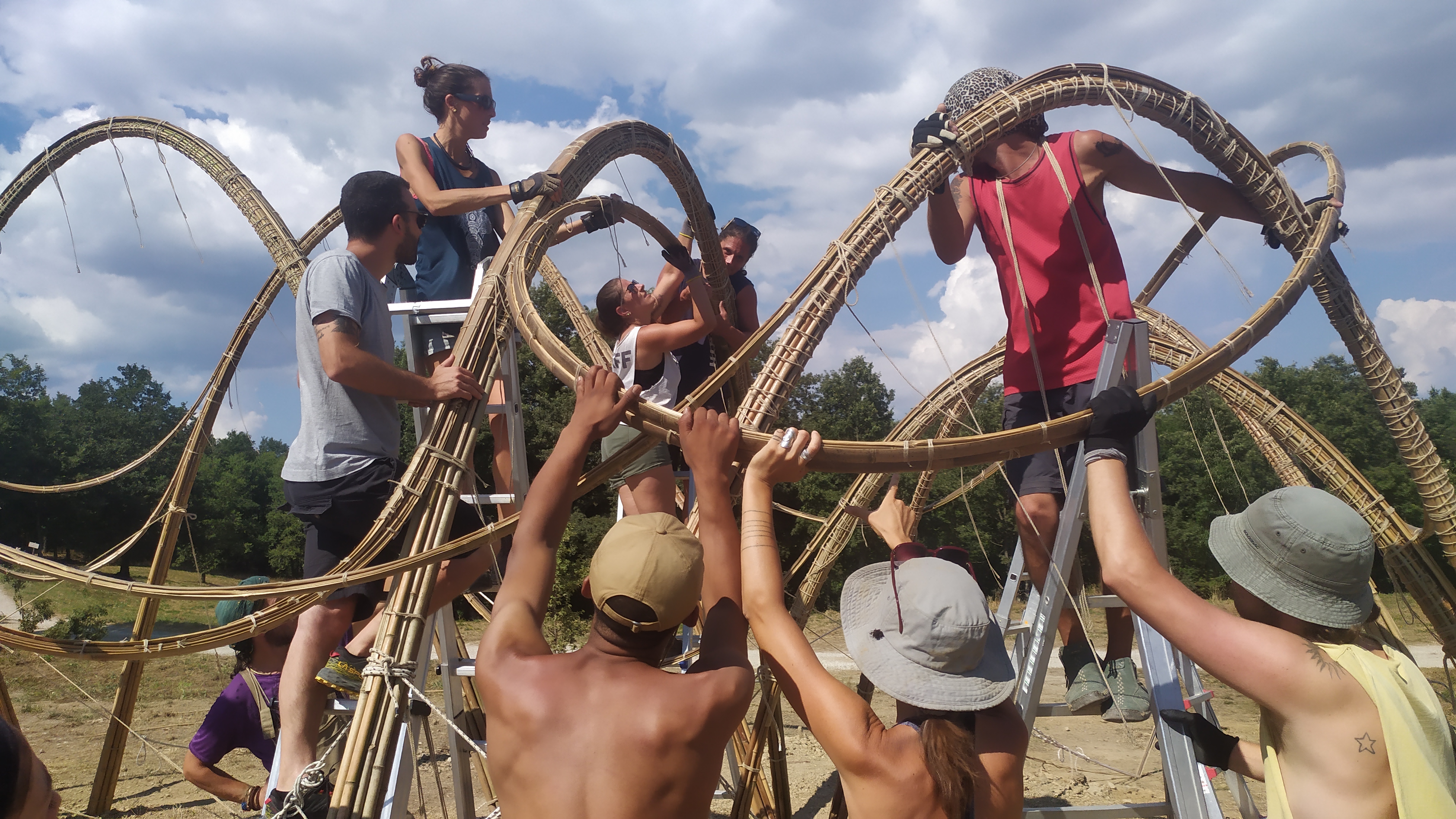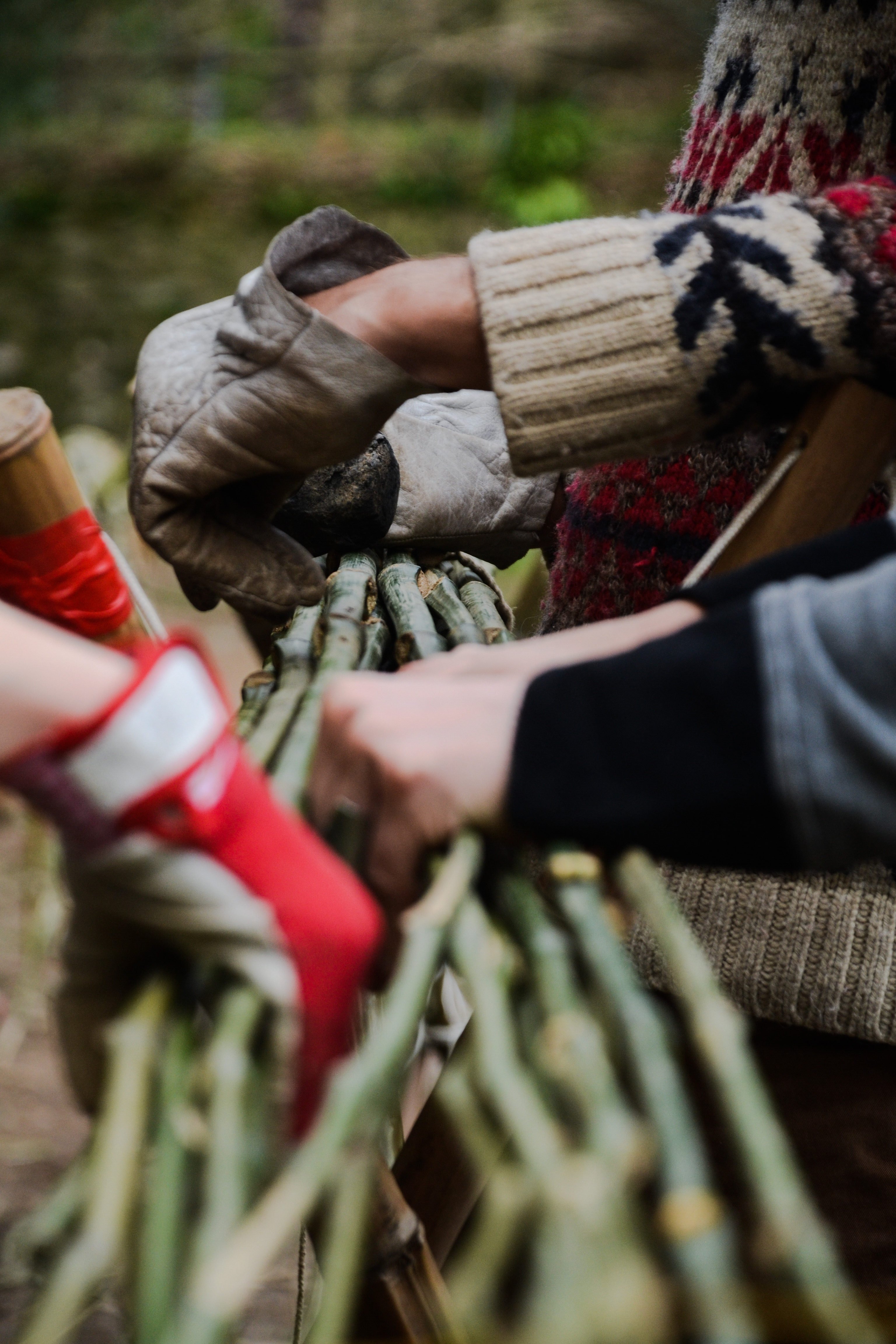Reconnecting with nature
ARUNDO Organic Structures
ARUNDO Organic Structures: green communities for transformative nature-based actions
A sustainable approach to bioconstruction that promotes environmental care, the protection and restoration of natural habitats, and the active participation of diverse and dynamic local communities in designing and building shelters, land art. Embracing a radical and circular perspective on living, ARUNDO draws on indigenous philosophy and vernacular infrastructuring to develop sustainable, resilient, and nature-based technologies, utilizing plants as fundamental structural and design elements.
Italy
Regional
Sicily, Lazio, Umbria, Tuscany, Liguria, Piedmont, Lombardy, Veneto, Friuli Venezia Giulia
Mainly rural
It refers to other types of transformations (soft investment)
Yes
2024-12-25
No
No
No
As a representative of an organisation
ARUNDO(A) was born as an evolution of the research and experimentation journey initiated by CanyaViva, with the aim of promoting participatory bioconstruction practices, land art, and sustainable self-building. The project enhances local natural resources, such as the Mediterranean cane and bamboo, transforming them into organic and artistic architectural structures.
A addresses the issue of managing invasive species by converting them into ecological building materials, promoting an intervention model that improves ecosystems and landscapes.
The project's main goal is to connect communities with nature through sustainable and participatory building processes. A engages a broad audience, including students, architecture and art professionals, local communities, and citizens interested in ecological practices. Through training courses, workshops, and land art interventions, A provides concrete tools for reclaiming environmentally respectful construction techniques.
In terms of impact, A has trained over 2,000 people through hands-on learning experiences, organizing approximately 15 self-building courses per year. The structures created—ranging from artistic installations to functional architectural elements such as greenhouses and pergolas—serve as tangible examples of how bioconstruction can address environmental and social challenges.
The project embodies the values of the NEB, integrating beauty, sustainability, and social inclusion. Using natural materials and community involvement, A creates spaces that promote well-being and environmental awareness while regenerating bamboo forests and biodiversity.
In the long term, A promotes a cultural shift towards a more harmonious relationship between humans and nature. Its methodology, based on the creative use of renewable resources and active participation, offers a replicable model in various territorial contexts, fostering a future where architecture and the environment coexist in balance.
A addresses the issue of managing invasive species by converting them into ecological building materials, promoting an intervention model that improves ecosystems and landscapes.
The project's main goal is to connect communities with nature through sustainable and participatory building processes. A engages a broad audience, including students, architecture and art professionals, local communities, and citizens interested in ecological practices. Through training courses, workshops, and land art interventions, A provides concrete tools for reclaiming environmentally respectful construction techniques.
In terms of impact, A has trained over 2,000 people through hands-on learning experiences, organizing approximately 15 self-building courses per year. The structures created—ranging from artistic installations to functional architectural elements such as greenhouses and pergolas—serve as tangible examples of how bioconstruction can address environmental and social challenges.
The project embodies the values of the NEB, integrating beauty, sustainability, and social inclusion. Using natural materials and community involvement, A creates spaces that promote well-being and environmental awareness while regenerating bamboo forests and biodiversity.
In the long term, A promotes a cultural shift towards a more harmonious relationship between humans and nature. Its methodology, based on the creative use of renewable resources and active participation, offers a replicable model in various territorial contexts, fostering a future where architecture and the environment coexist in balance.
Bioconstruction
Co-creation
Community
Regeneration
Land-Art
The ARUNDO project’s key objectives in terms of sustainability focus on using natural and renewable materials, addressing ecological challenges, and fostering community engagement. These goals have been achieved by employing a unique construction method that uses abundant and locally sourced materials such as Mediterranean cane (Arundo donax) and bamboo. The project turns invasive species like Arundo donax, which are problematic in local ecosystems, into sustainable building resources, thus offering a solution to both the environmental and economic costs of their eradication. This approach avoids costy and ecologically damaging methods like herbicides, promoting a more sustainable and effective alternative.
Additionally, the project encourages the use of bamboo, a highly sustainable material with exceptional ecological benefits, including fast growth and carbon sequestration. Bamboo can reach maturity in just five years and absorbs significant amounts of CO2, making it an eco-friendly building resource. The use of these materials, combined with the active participation of local communities, ensures that the project’s approach to sustainability is not just theoretical but also practical and replicable.
The project exemplifies sustainability by integrating low-impact building techniques with ecological restoration. By teaching communities how to use locally sourced, natural materials for construction, it fosters an environmentally conscious approach to architecture that reduces energy consumption, minimizes emissions, and enhances biodiversity. Through this approach, ARUNDO sets a model for sustainable construction that balances ecological, social, and economic needs, helping to regenerate ecosystems while promoting local employment and sustainable living practices.
Additionally, the project encourages the use of bamboo, a highly sustainable material with exceptional ecological benefits, including fast growth and carbon sequestration. Bamboo can reach maturity in just five years and absorbs significant amounts of CO2, making it an eco-friendly building resource. The use of these materials, combined with the active participation of local communities, ensures that the project’s approach to sustainability is not just theoretical but also practical and replicable.
The project exemplifies sustainability by integrating low-impact building techniques with ecological restoration. By teaching communities how to use locally sourced, natural materials for construction, it fosters an environmentally conscious approach to architecture that reduces energy consumption, minimizes emissions, and enhances biodiversity. Through this approach, ARUNDO sets a model for sustainable construction that balances ecological, social, and economic needs, helping to regenerate ecosystems while promoting local employment and sustainable living practices.
The project’s key objectives in terms of aesthetics and the quality of experience for people focus on blending innovative, sustainable construction methods with cultural, natural, and community-driven values. These objectives have been met by using locally sourced natural materials, which not only provide aesthetically pleasing structures but also foster a deep connection between people and the environment.
The project embraces a flexible, organic design approach, using the natural beauty and versatility of these materials to create functional, visually appealing, and culturally significant buildings. The project's design also incorporates traditional and contemporary techniques, ensuring that the structures harmonise with the surrounding landscape and offer a sense of belonging to local communities.
A. highlights the value of reclaiming and reinterpreting a once-abundant yet now underutilized natural resource. This not only contributes to the environment by controlling the spread of invasive species but also reintroduces the cultural heritage of using this plant in construction. The structures created are beautiful, organic, and sustainable, encouraging a reconnection to traditional building techniques while incorporating modern ecological principles. This blend of old and new creates spaces that are both functional and inspiring for users, offering an enriching experience that reflects a profound respect for nature.
The educational aspect of the project encourages the sharing of knowledge and builds local capacity, ensuring that the project’s benefits extend beyond just the built environment to include the people involved in the process.
Ultimately, ARUNDO serves as an exemplary model by blending sustainability, aesthetics, and cultural relevance. It promotes an architecture that is not only environmentally responsible but also culturally enriching and socially inclusive.
The project embraces a flexible, organic design approach, using the natural beauty and versatility of these materials to create functional, visually appealing, and culturally significant buildings. The project's design also incorporates traditional and contemporary techniques, ensuring that the structures harmonise with the surrounding landscape and offer a sense of belonging to local communities.
A. highlights the value of reclaiming and reinterpreting a once-abundant yet now underutilized natural resource. This not only contributes to the environment by controlling the spread of invasive species but also reintroduces the cultural heritage of using this plant in construction. The structures created are beautiful, organic, and sustainable, encouraging a reconnection to traditional building techniques while incorporating modern ecological principles. This blend of old and new creates spaces that are both functional and inspiring for users, offering an enriching experience that reflects a profound respect for nature.
The educational aspect of the project encourages the sharing of knowledge and builds local capacity, ensuring that the project’s benefits extend beyond just the built environment to include the people involved in the process.
Ultimately, ARUNDO serves as an exemplary model by blending sustainability, aesthetics, and cultural relevance. It promotes an architecture that is not only environmentally responsible but also culturally enriching and socially inclusive.
The A. project has a strong commitment to inclusion, aiming to create accessible, affordable, and sustainable buildings that cater to diverse communities while fostering new societal models of collaboration, innovation, and shared responsibility. These objectives have been met through a multi-faceted approach that integrates accessibility in design, inclusivity in decision-making, and economic affordability.
By valorising locally available, renewable materials, the project makes construction more cost-effective compared to building methods that rely on more expensive materials and complex processes. These materials are abundant and accessible, lowering overall construction costs and making the buildings more affordable for low-income communities. Furthermore, the use of natural and locally sourced materials reduces the carbon footprint and reliance on external suppliers, which is especially beneficial in rural or underdeveloped areas.
In terms of accessibility, the project emphasizes the principle of "design for all." Structures are designed to be flexible, adaptable, and suitable for diverse uses and populations, ensuring that the spaces are usable by people of all ages, abilities, and backgrounds. By prioritizing accessibility in the design process, the project seeks to create environments that are welcoming and usable by everyone.
Moreover, A. promotes an inclusive governance system that values local community participation and knowledge sharing. The governance model is decentralized, with local communities, artisans, and professionals having a say in the planning and execution of projects, ensuring that the outcomes reflect the needs and desires of the people directly affected.
The focus on low-impact, non-mechanized construction methods also opens up opportunities for individuals with fewer resources to be involved in building their own homes or working within their communities to create eco-friendly, sustainable structures.
By valorising locally available, renewable materials, the project makes construction more cost-effective compared to building methods that rely on more expensive materials and complex processes. These materials are abundant and accessible, lowering overall construction costs and making the buildings more affordable for low-income communities. Furthermore, the use of natural and locally sourced materials reduces the carbon footprint and reliance on external suppliers, which is especially beneficial in rural or underdeveloped areas.
In terms of accessibility, the project emphasizes the principle of "design for all." Structures are designed to be flexible, adaptable, and suitable for diverse uses and populations, ensuring that the spaces are usable by people of all ages, abilities, and backgrounds. By prioritizing accessibility in the design process, the project seeks to create environments that are welcoming and usable by everyone.
Moreover, A. promotes an inclusive governance system that values local community participation and knowledge sharing. The governance model is decentralized, with local communities, artisans, and professionals having a say in the planning and execution of projects, ensuring that the outcomes reflect the needs and desires of the people directly affected.
The focus on low-impact, non-mechanized construction methods also opens up opportunities for individuals with fewer resources to be involved in building their own homes or working within their communities to create eco-friendly, sustainable structures.
A. actively involves citizens and civil society through a participatory framework that integrates local knowledge, community engagement, and collaborative governance. Beneficiaries are not passive recipients but co-creators in the processes of natural and territorial care, design, construction, and implementation acts.
A. engages local communities, artisans, and environmental groups in the protection, the revitalization, and the regeneration of natural ecosystems, while concentrating in the selection of materials, the design of structures, and the construction process itself. The creation of A’s bio-architectural designs holds deep symbolic significance, as it is an inherently collaborative and inclusive process. Each bamboo or Arundo donax branch is unique in its curvature, strength, and texture, requiring collective evaluation to determine its role in the final design.
This process mirrors the essence of A's dedication to multi-level innovation —where diverse skills, perspectives, and contributions must come together to create something greater than the sum of its parts. Harvesting, landscape maintenance and constructive workshops empower residents to care about their own lands and build with bio-based materials, promoting self-sufficiency and skills development. This inclusive approach strengthens social cohesion while stimulating a culture of sustainability and innovation among a community that constantly grows as an expansive system.
The involvement of local communities generates transformative effects: socially, it nourishes a sense of belonging and collective agency, reinforcing the value of local traditions and craftsmanship. Economically, the project generates employment opportunities, particularly for underrepresented groups, by creating a sustainable construction sector centred on local resources. Environmentally, it promotes circular economy principles, reducing reliance on energy-intensive materials and enhancing biodiversity.
A. engages local communities, artisans, and environmental groups in the protection, the revitalization, and the regeneration of natural ecosystems, while concentrating in the selection of materials, the design of structures, and the construction process itself. The creation of A’s bio-architectural designs holds deep symbolic significance, as it is an inherently collaborative and inclusive process. Each bamboo or Arundo donax branch is unique in its curvature, strength, and texture, requiring collective evaluation to determine its role in the final design.
This process mirrors the essence of A's dedication to multi-level innovation —where diverse skills, perspectives, and contributions must come together to create something greater than the sum of its parts. Harvesting, landscape maintenance and constructive workshops empower residents to care about their own lands and build with bio-based materials, promoting self-sufficiency and skills development. This inclusive approach strengthens social cohesion while stimulating a culture of sustainability and innovation among a community that constantly grows as an expansive system.
The involvement of local communities generates transformative effects: socially, it nourishes a sense of belonging and collective agency, reinforcing the value of local traditions and craftsmanship. Economically, the project generates employment opportunities, particularly for underrepresented groups, by creating a sustainable construction sector centred on local resources. Environmentally, it promotes circular economy principles, reducing reliance on energy-intensive materials and enhancing biodiversity.
The A project successfully engages stakeholders at various levels—local, regional, national, and European. Each level of engagement has brought unique contributions, reinforcing the project's impact and effectiveness. It is crucial to mention how ARUNDO is an ongoing practice, that continuously envolves stakeholders transversally, in order to navigate and stimulate values of nature reconnection and multi-level impacts. In terms of local engagement, the inclusion of community-based organizations, in Italy and among Europe ensures that knowledge and techniques are shared, creating a grassroots movement that promotes sustainable practices. These organizations have played a crucial role in involving local communities, promoting hands-on learning, and addressing specific environmental challenges posed by invasive species such as Arundo donax. Moreover, ARUNDO collaborates today with italian and spanish municipal authorities and environmental agencies to integrate sustainable design into broader ecological strategies. At national and European levels, ARUNDO has been recognized by universities and institutions that see the value in standardizing its methodologies. Collaborations with the Faculty of Architecture of Bologna and the Escuela Universitaria de Arquitectura Técnica e Ingeniería de la Edificación at the Universidad Politécnica de Catalunya (UPC) have led to the codification of raw material selection, classification, and structural assembly processes. These partnerships validate the scientific and architectural relevance of ARUNDO’s approach. Participation in festivals such as Boom Festival (Portugal), Freedom Festival (Portugal), and Burning Mountain (Switzerland) has allowed the project to reach an international audience, promoting best practices in sustainability and innovation. Additionally, ARUNDO’s methodology aligns with European environmental policies, encouraging cross-border collaboration and policy alignment.
The ARUNDO project exemplifies the power of interdisciplinary collaboration, integrating diverse fields to advance sustainable bio-architecture and ecological restoration. By uniting experts from architecture, environmental science, botany, and community arts, the project fosters innovative solutions to environmental challenges.
Interdisciplinary Collaboration: ARUNDO's success is rooted in its collaborative approach, bringing together professionals from various disciplines:
Architecture and Design: Architects and designers work on developing sustainable construction techniques using Arundo donax as a building material.
Environmental Science and Botany: Scientists study the ecological impact of Arundo donax and Bamboo, informing strategies for its management and utilization.
Community Arts and Education: Artists and educators engage local communities through workshops and installations, promoting environmental awareness and hands-on learning.
This interdisciplinary framework not only enhances the project's effectiveness but also fosters a holistic understanding of sustainability challenges.
Added Value of Interdisciplinary Engagement: The convergence of multiple disciplines within ARUNDO offers several benefits:
Innovative Problem-Solving: Diverse perspectives lead to creative solutions that might not emerge within a single field.
Comprehensive Education: Participants gain a well-rounded understanding of sustainability, encompassing technical, ecological, and social dimensions.
Enhanced Community Impact: Collaborative efforts ensure that initiatives are culturally relevant and scientifically sound, increasing community engagement and project longevity.
By embracing interdisciplinary collaboration, the ARUNDO project not only addresses environmental issues but also builds resilient communities equipped with diverse skills and knowledge.
Interdisciplinary Collaboration: ARUNDO's success is rooted in its collaborative approach, bringing together professionals from various disciplines:
Architecture and Design: Architects and designers work on developing sustainable construction techniques using Arundo donax as a building material.
Environmental Science and Botany: Scientists study the ecological impact of Arundo donax and Bamboo, informing strategies for its management and utilization.
Community Arts and Education: Artists and educators engage local communities through workshops and installations, promoting environmental awareness and hands-on learning.
This interdisciplinary framework not only enhances the project's effectiveness but also fosters a holistic understanding of sustainability challenges.
Added Value of Interdisciplinary Engagement: The convergence of multiple disciplines within ARUNDO offers several benefits:
Innovative Problem-Solving: Diverse perspectives lead to creative solutions that might not emerge within a single field.
Comprehensive Education: Participants gain a well-rounded understanding of sustainability, encompassing technical, ecological, and social dimensions.
Enhanced Community Impact: Collaborative efforts ensure that initiatives are culturally relevant and scientifically sound, increasing community engagement and project longevity.
By embracing interdisciplinary collaboration, the ARUNDO project not only addresses environmental issues but also builds resilient communities equipped with diverse skills and knowledge.
The ARUNDO project stands out as an innovative initiative by transforming Arundo donax, an invasive plant, from an ecological threat into a sustainable resource for bio-architecture and ecological restoration. Unlike mainstream environmental approaches that focus solely on eradication, ARUNDO integrates architecture, environmental science, and community engagement to create a circular economy around this abundant biomass.
A key innovation lies in its multidisciplinary approach, where architects develop low-carbon, biodegradable building materials, scientists research sustainable harvesting methods, and artists engage local communities in educational installations. This holistic method contrasts with traditional siloed strategies, ensuring both ecological balance and social impact.
Moreover, ARUNDO promotes nature-based solutions by utilizing regenerative design principles, whereas conventional construction still relies heavily on resource-intensive materials. By repurposing an invasive species, the project pioneers zero-waste design and local material sourcing, reducing reliance on deforestation and high-emission alternatives.
Additionally, the project’s participatory model fosters community involvement, positioning local knowledge at the core of environmental action. Unlike typical top-down interventions, ARUNDO empowers communities through hands-on learning, creating long-term engagement in sustainability practices.
By integrating innovation in material science, ecological restoration, and social engagement, ARUNDO challenges conventional environmental and architectural paradigms, offering a replicable model for sustainable, community-driven solutions.
A key innovation lies in its multidisciplinary approach, where architects develop low-carbon, biodegradable building materials, scientists research sustainable harvesting methods, and artists engage local communities in educational installations. This holistic method contrasts with traditional siloed strategies, ensuring both ecological balance and social impact.
Moreover, ARUNDO promotes nature-based solutions by utilizing regenerative design principles, whereas conventional construction still relies heavily on resource-intensive materials. By repurposing an invasive species, the project pioneers zero-waste design and local material sourcing, reducing reliance on deforestation and high-emission alternatives.
Additionally, the project’s participatory model fosters community involvement, positioning local knowledge at the core of environmental action. Unlike typical top-down interventions, ARUNDO empowers communities through hands-on learning, creating long-term engagement in sustainability practices.
By integrating innovation in material science, ecological restoration, and social engagement, ARUNDO challenges conventional environmental and architectural paradigms, offering a replicable model for sustainable, community-driven solutions.
The ARUNDO project employs a multidisciplinary methodology integrating ecological restoration, sustainable bio-architecture, and participatory design. The approach is structured into key phases:
Ecological and Material Assessment – Identifying and mapping areas invaded by Arundo donax, assessing its ecological impact, and selecting suitable sites for harvesting. The plant is then categorized based on structural integrity for different construction purposes.
Sustainable Harvesting and Processing – Arundo donax is harvested using manual and low-impact techniques, ensuring minimal disturbance to local ecosystems. Stems are then treated, classified, and dried following standardized methods to ensure durability in construction.
Design and Prototyping – Architectural and artistic designs are developed using Arundo donax as a primary material. The methodology emphasizes modular, adaptable, and nature-based solutions, integrating traditional craftsmanship with modern bio-construction techniques.
Community Engagement and Training – Through hands-on workshops, self-construction courses, and artistic installations, local communities actively participate in building structures, gaining knowledge on sustainable materials and ecological restoration.
Implementation and Monitoring – The constructed elements, whether pavilions, shelters, or artistic structures, are monitored for durability, ecological impact, and social acceptance. Feedback loops help refine methodologies for future applications.
Knowledge Dissemination and Replication – Findings are shared with academic institutions, municipalities, and international networks through conferences, publications, and festival installations, promoting the methodology’s adoption across different contexts.
This holistic approach transforms an invasive species into a resource, merging ecological restoration with sustainable architecture while fostering community involvement.
Ecological and Material Assessment – Identifying and mapping areas invaded by Arundo donax, assessing its ecological impact, and selecting suitable sites for harvesting. The plant is then categorized based on structural integrity for different construction purposes.
Sustainable Harvesting and Processing – Arundo donax is harvested using manual and low-impact techniques, ensuring minimal disturbance to local ecosystems. Stems are then treated, classified, and dried following standardized methods to ensure durability in construction.
Design and Prototyping – Architectural and artistic designs are developed using Arundo donax as a primary material. The methodology emphasizes modular, adaptable, and nature-based solutions, integrating traditional craftsmanship with modern bio-construction techniques.
Community Engagement and Training – Through hands-on workshops, self-construction courses, and artistic installations, local communities actively participate in building structures, gaining knowledge on sustainable materials and ecological restoration.
Implementation and Monitoring – The constructed elements, whether pavilions, shelters, or artistic structures, are monitored for durability, ecological impact, and social acceptance. Feedback loops help refine methodologies for future applications.
Knowledge Dissemination and Replication – Findings are shared with academic institutions, municipalities, and international networks through conferences, publications, and festival installations, promoting the methodology’s adoption across different contexts.
This holistic approach transforms an invasive species into a resource, merging ecological restoration with sustainable architecture while fostering community involvement.
The ARUNDO project offers a highly adaptable framework that can be implemented in various locations, benefiting different communities and environmental contexts. Key replicable aspects include:
Resource Valorization: the transformation of Arundo donax and Bamboo from an invasive species into a useful material can be applied to other regions dealing with similar ecological issues. The methodology can be adjusted to utilize different invasive plants with comparable characteristics.
Eco-Friendly Construction Approaches: the project’s natural building techniques provide a replicable model for regions seeking sustainable alternatives to conventional materials. Its adaptable design principles make it suitable for various architectural, artistic, and urban applications.
Knowledge Transfer and Capacity Building: the educational aspect, which involves practical workshops and community-led initiatives, can be implemented elsewhere to promote self-sufficiency in sustainable construction and environmental restoration.
Accessible and Scalable Techniques: the harvesting, processing, and treatment of Arundo donax and Bamboo require minimal resources, making the methods easy to replicate in different socio-economic settings with locally available tools and infrastructure.
Interdisciplinary Applications: the fusion of architecture, design, and ecological awareness can be incorporated into cultural, educational, and urban planning projects, encouraging innovative approaches to sustainability.
Collaborative Networks: the model of engaging stakeholders—ranging from local authorities to research institutions and creative professionals—can be adapted to foster cross-sector partnerships in diverse contexts.
By applying these strategies, the ARUNDO approach can be expanded globally, turning environmental challenges into opportunities for sustainable development.
Resource Valorization: the transformation of Arundo donax and Bamboo from an invasive species into a useful material can be applied to other regions dealing with similar ecological issues. The methodology can be adjusted to utilize different invasive plants with comparable characteristics.
Eco-Friendly Construction Approaches: the project’s natural building techniques provide a replicable model for regions seeking sustainable alternatives to conventional materials. Its adaptable design principles make it suitable for various architectural, artistic, and urban applications.
Knowledge Transfer and Capacity Building: the educational aspect, which involves practical workshops and community-led initiatives, can be implemented elsewhere to promote self-sufficiency in sustainable construction and environmental restoration.
Accessible and Scalable Techniques: the harvesting, processing, and treatment of Arundo donax and Bamboo require minimal resources, making the methods easy to replicate in different socio-economic settings with locally available tools and infrastructure.
Interdisciplinary Applications: the fusion of architecture, design, and ecological awareness can be incorporated into cultural, educational, and urban planning projects, encouraging innovative approaches to sustainability.
Collaborative Networks: the model of engaging stakeholders—ranging from local authorities to research institutions and creative professionals—can be adapted to foster cross-sector partnerships in diverse contexts.
By applying these strategies, the ARUNDO approach can be expanded globally, turning environmental challenges into opportunities for sustainable development.
A addresses critical global challenges such as environmental degradation, climate change, resource scarcity, and social inequality by implementing innovative, nature-based local solutions.
Biodiversity Loss and Ecosystem Degradation:
invasive plant species threaten ecosystems worldwide by displacing native vegetation and depleting water resources. A transforms this challenge into an opportunity by repurposing plants as a sustainable construction material. This approach helps restore biodiversity, supports local ecosystems, and promotes regenerative land management.
Climate Change and Carbon Emissions: the construction sector is a major contributor to global carbon emissions. A provides an eco-friendly alternative by offering a renewable, low-impact building material. By replacing conventional, carbon-intensive materials with a natural resource that sequesters CO₂ during growth, the project actively reduces its environmental footprint.
Waste Reduction and Circular Economy: A promotes a circular approach by utilizing an abundant, fast-growing resource that would otherwise go to waste. This aligns with global sustainability efforts to reduce reliance on non-renewable resources, minimize waste, and create closed-loop material cycles.
Social and Economic Inclusion: the project empowers local communities by integrating them into the harvesting, processing, and application of Arundo donax. This creates jobs, supports local economies, and encourages knowledge-sharing, particularly in rural areas where economic opportunities may be limited.
Affordable and Sustainable Housing: by offering a low-cost, sustainable building material, ARUNDO addresses the global housing crisis. It provides an accessible alternative for developing resilient and energy-efficient shelters, ensuring affordability without compromising quality or environmental responsibility.
Biodiversity Loss and Ecosystem Degradation:
invasive plant species threaten ecosystems worldwide by displacing native vegetation and depleting water resources. A transforms this challenge into an opportunity by repurposing plants as a sustainable construction material. This approach helps restore biodiversity, supports local ecosystems, and promotes regenerative land management.
Climate Change and Carbon Emissions: the construction sector is a major contributor to global carbon emissions. A provides an eco-friendly alternative by offering a renewable, low-impact building material. By replacing conventional, carbon-intensive materials with a natural resource that sequesters CO₂ during growth, the project actively reduces its environmental footprint.
Waste Reduction and Circular Economy: A promotes a circular approach by utilizing an abundant, fast-growing resource that would otherwise go to waste. This aligns with global sustainability efforts to reduce reliance on non-renewable resources, minimize waste, and create closed-loop material cycles.
Social and Economic Inclusion: the project empowers local communities by integrating them into the harvesting, processing, and application of Arundo donax. This creates jobs, supports local economies, and encourages knowledge-sharing, particularly in rural areas where economic opportunities may be limited.
Affordable and Sustainable Housing: by offering a low-cost, sustainable building material, ARUNDO addresses the global housing crisis. It provides an accessible alternative for developing resilient and energy-efficient shelters, ensuring affordability without compromising quality or environmental responsibility.
The ARUNDO project delivers tangible environmental, architectural, and social results, demonstrating the transformative impact of sustainable practices.
By repurposing invasive plants such as Arundo Donax and Bamboo, the project restores degraded ecosystems, improving soil health, preventing erosion, and enhancing biodiversity. Water retention increases, local flora and fauna return, and invasive overgrowth is managed sustainably, turning a challenge into an ecological asset. Since 2010, A. has been managing a 7-hectare bamboo forest in Tuscany, Italy and several areas invased by Arundo Donax. Today, expanding across both Italian and Spanish landscapes, the project actively maintains and regenerates approximately 20 hectares of woodland.
Architecturally, plants becomes a key material for sustainable construction, reducing reliance on carbon-intensive resources. Its use in lightweight, breathable structures enhances thermal comfort and aesthetic appeal while cutting emissions and promoting circular design. Public spaces gain new life through nature-integrated, inclusive designs that blend tradition with innovation.
Socially, ARUNDO empowers communities by creating jobs, training artisans, and fostering local craftsmanship. It strengthens cultural identity and environmental stewardship, engaging residents in the co-creation of sustainable solutions. The project improves well-being by reconnecting people with nature, transforming neglected areas into vibrant, multifunctional spaces that invite interaction and creativity.
The impact extends beyond its immediate location, offering a replicable model for regions facing similar ecological and social challenges. ARUNDO proves that environmental regeneration, sustainable architecture, and community engagement can work together to create lasting, beautiful, and functional spaces.
By repurposing invasive plants such as Arundo Donax and Bamboo, the project restores degraded ecosystems, improving soil health, preventing erosion, and enhancing biodiversity. Water retention increases, local flora and fauna return, and invasive overgrowth is managed sustainably, turning a challenge into an ecological asset. Since 2010, A. has been managing a 7-hectare bamboo forest in Tuscany, Italy and several areas invased by Arundo Donax. Today, expanding across both Italian and Spanish landscapes, the project actively maintains and regenerates approximately 20 hectares of woodland.
Architecturally, plants becomes a key material for sustainable construction, reducing reliance on carbon-intensive resources. Its use in lightweight, breathable structures enhances thermal comfort and aesthetic appeal while cutting emissions and promoting circular design. Public spaces gain new life through nature-integrated, inclusive designs that blend tradition with innovation.
Socially, ARUNDO empowers communities by creating jobs, training artisans, and fostering local craftsmanship. It strengthens cultural identity and environmental stewardship, engaging residents in the co-creation of sustainable solutions. The project improves well-being by reconnecting people with nature, transforming neglected areas into vibrant, multifunctional spaces that invite interaction and creativity.
The impact extends beyond its immediate location, offering a replicable model for regions facing similar ecological and social challenges. ARUNDO proves that environmental regeneration, sustainable architecture, and community engagement can work together to create lasting, beautiful, and functional spaces.

